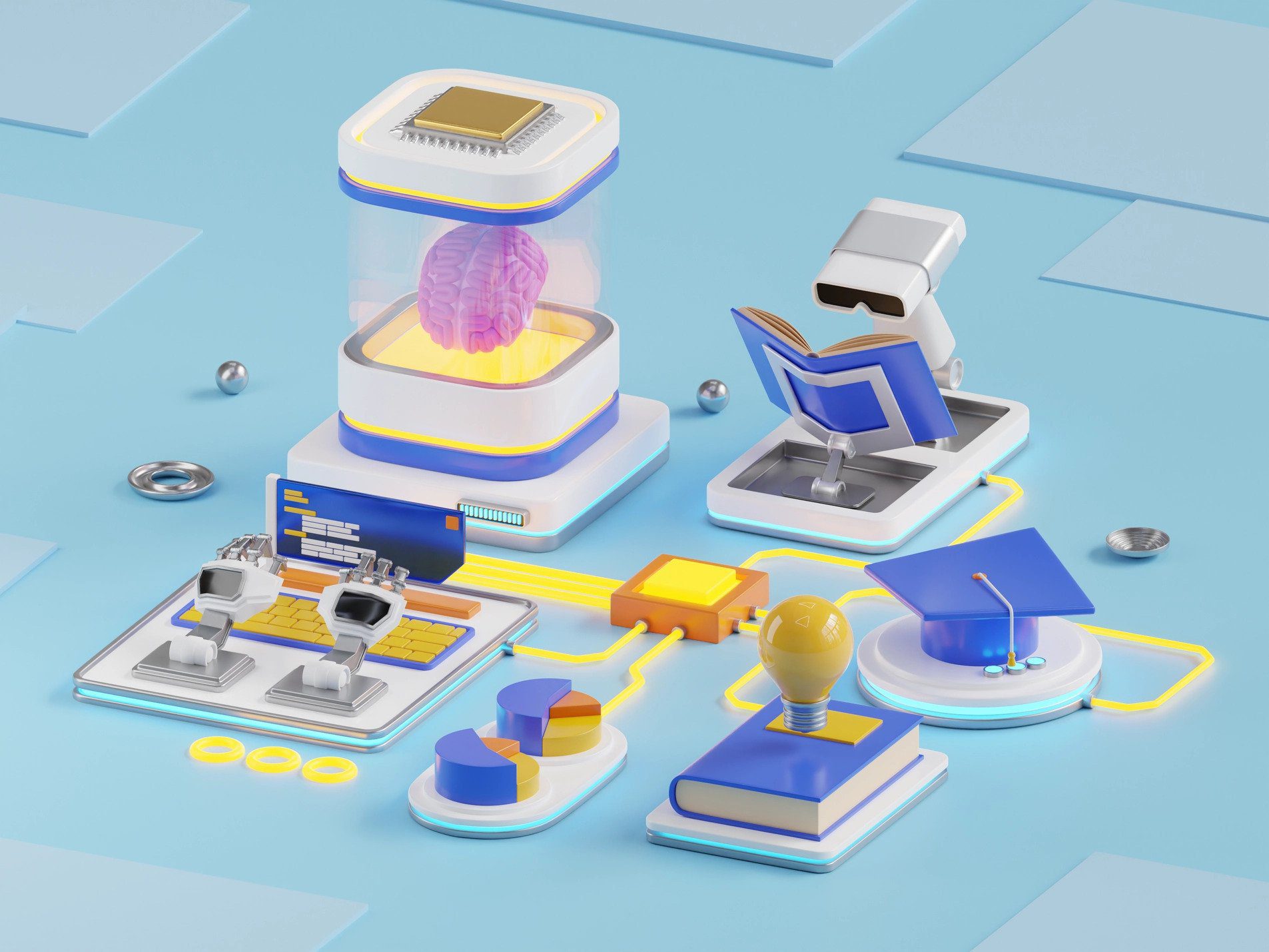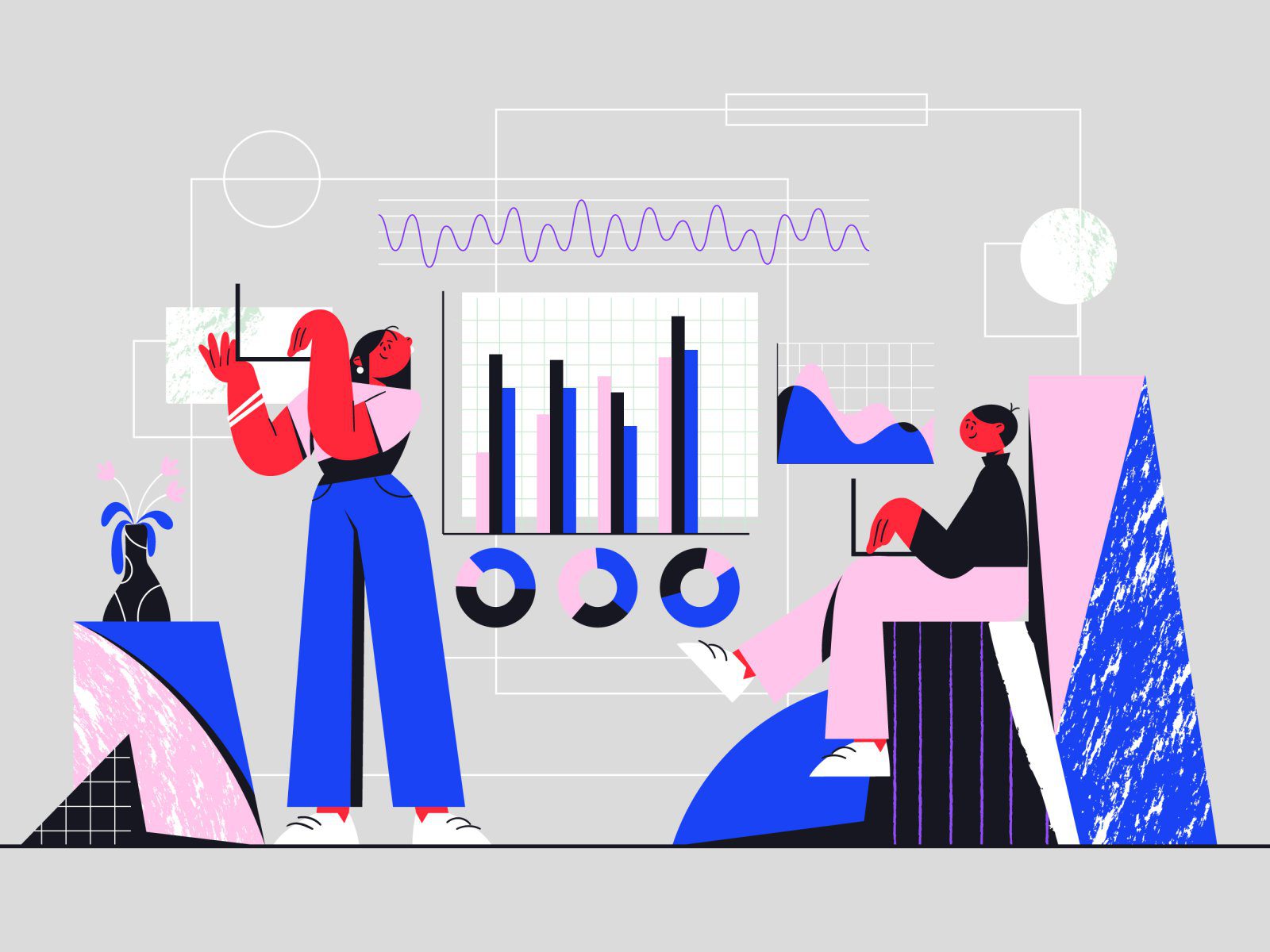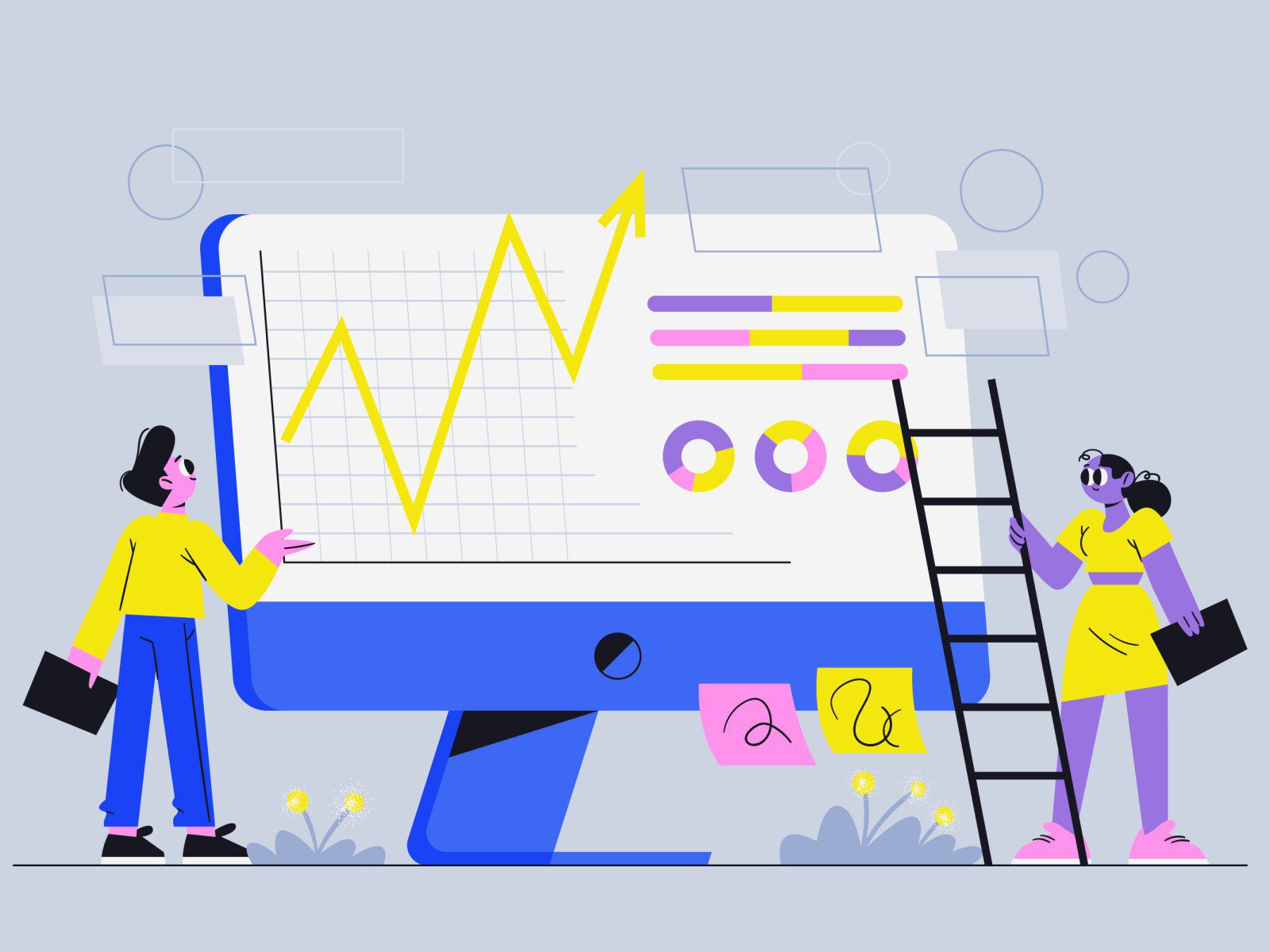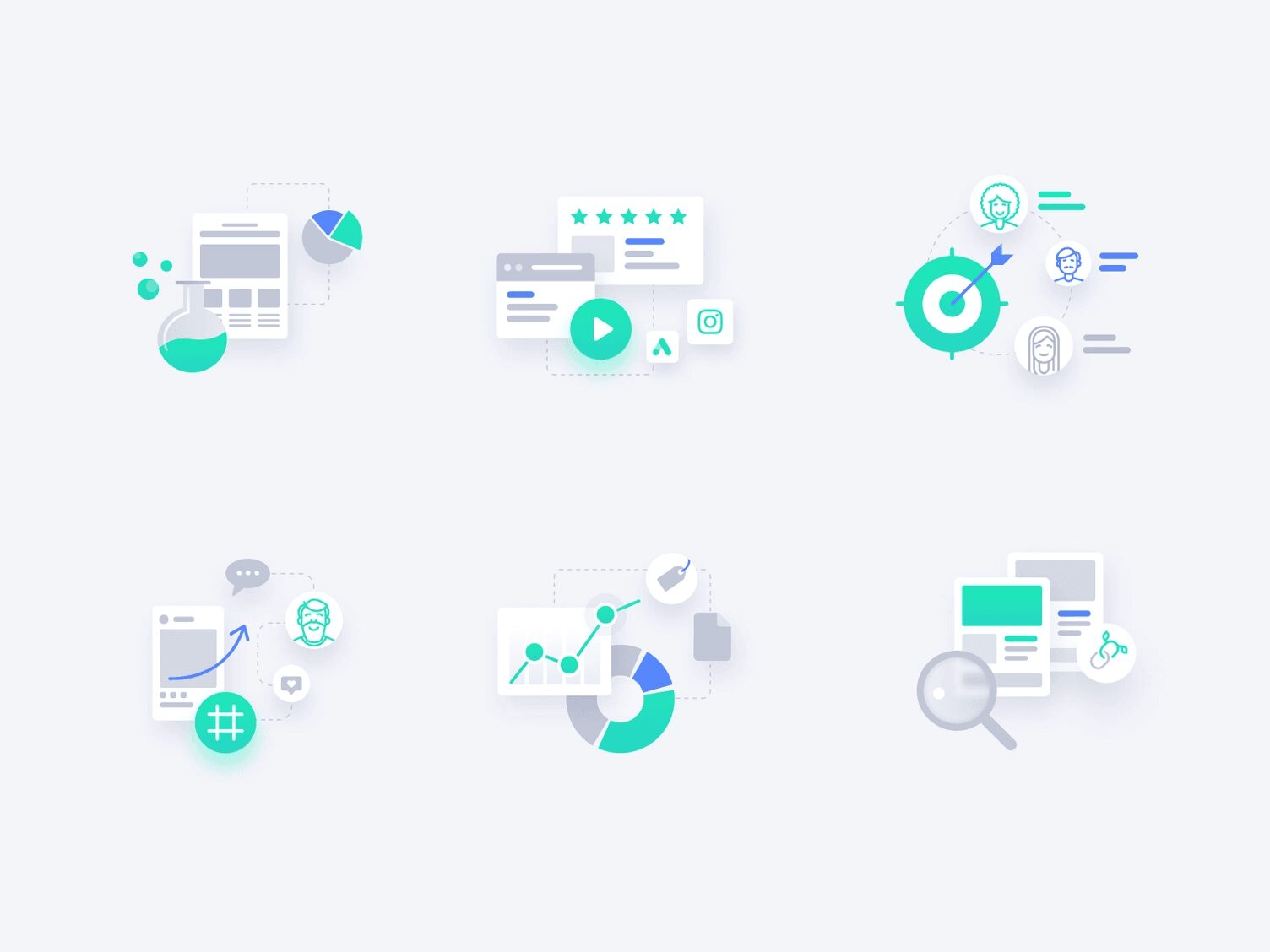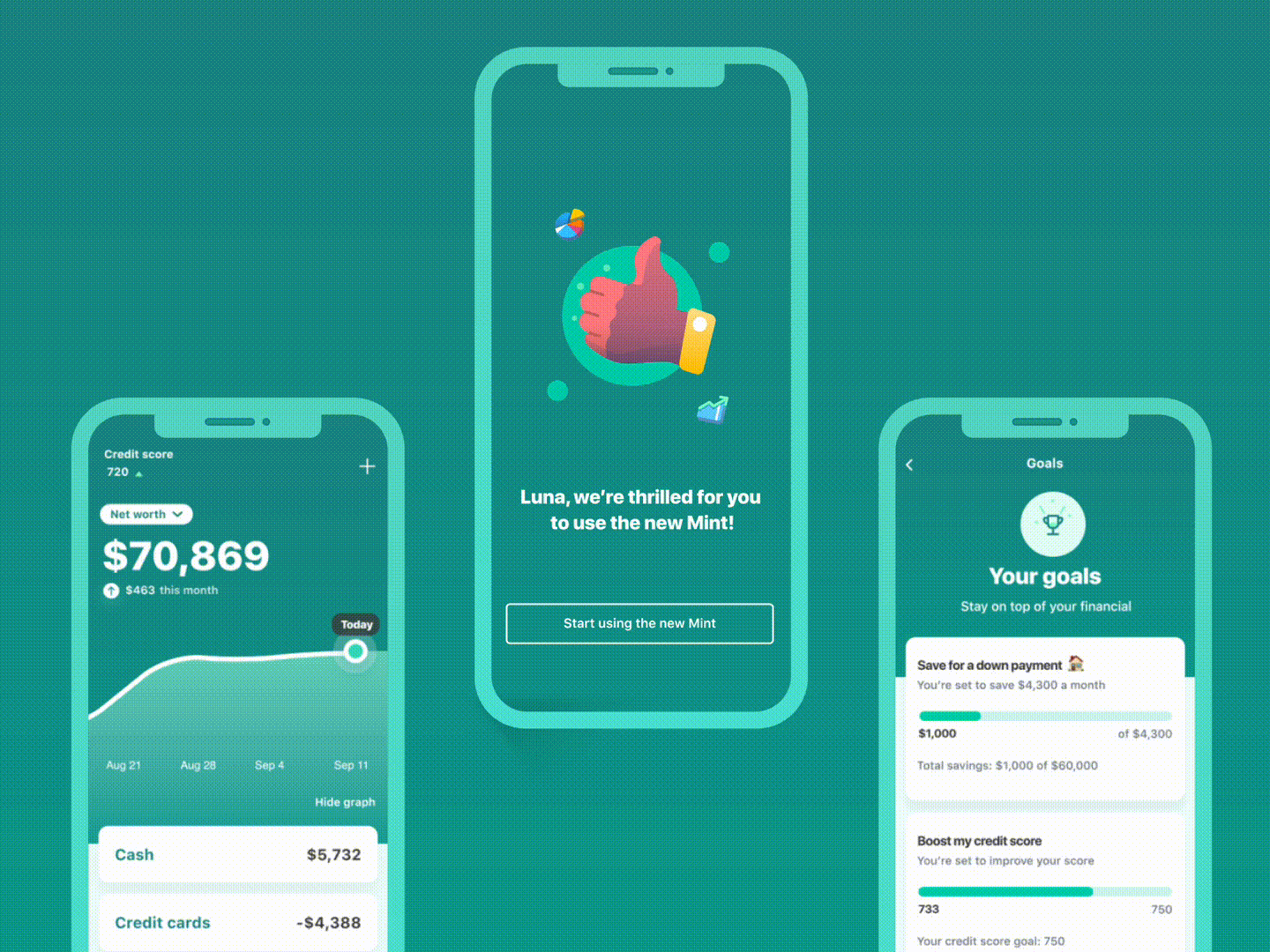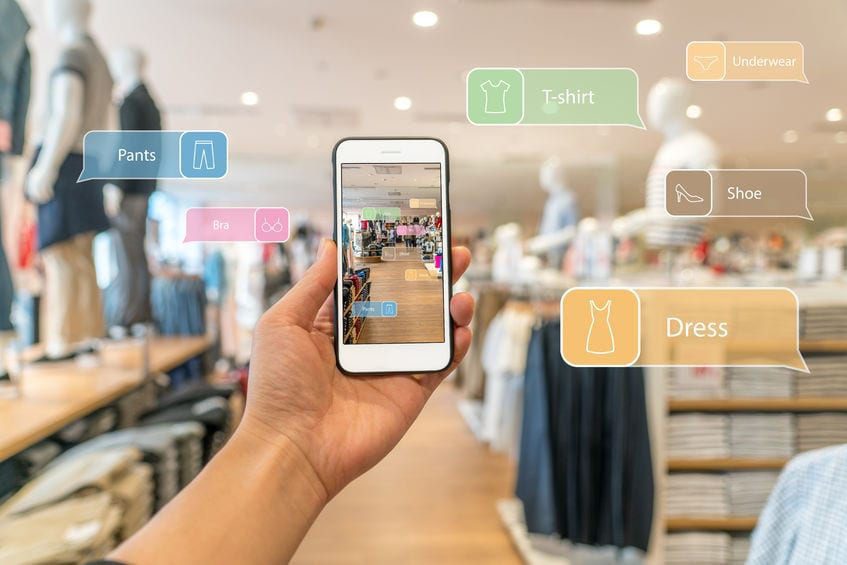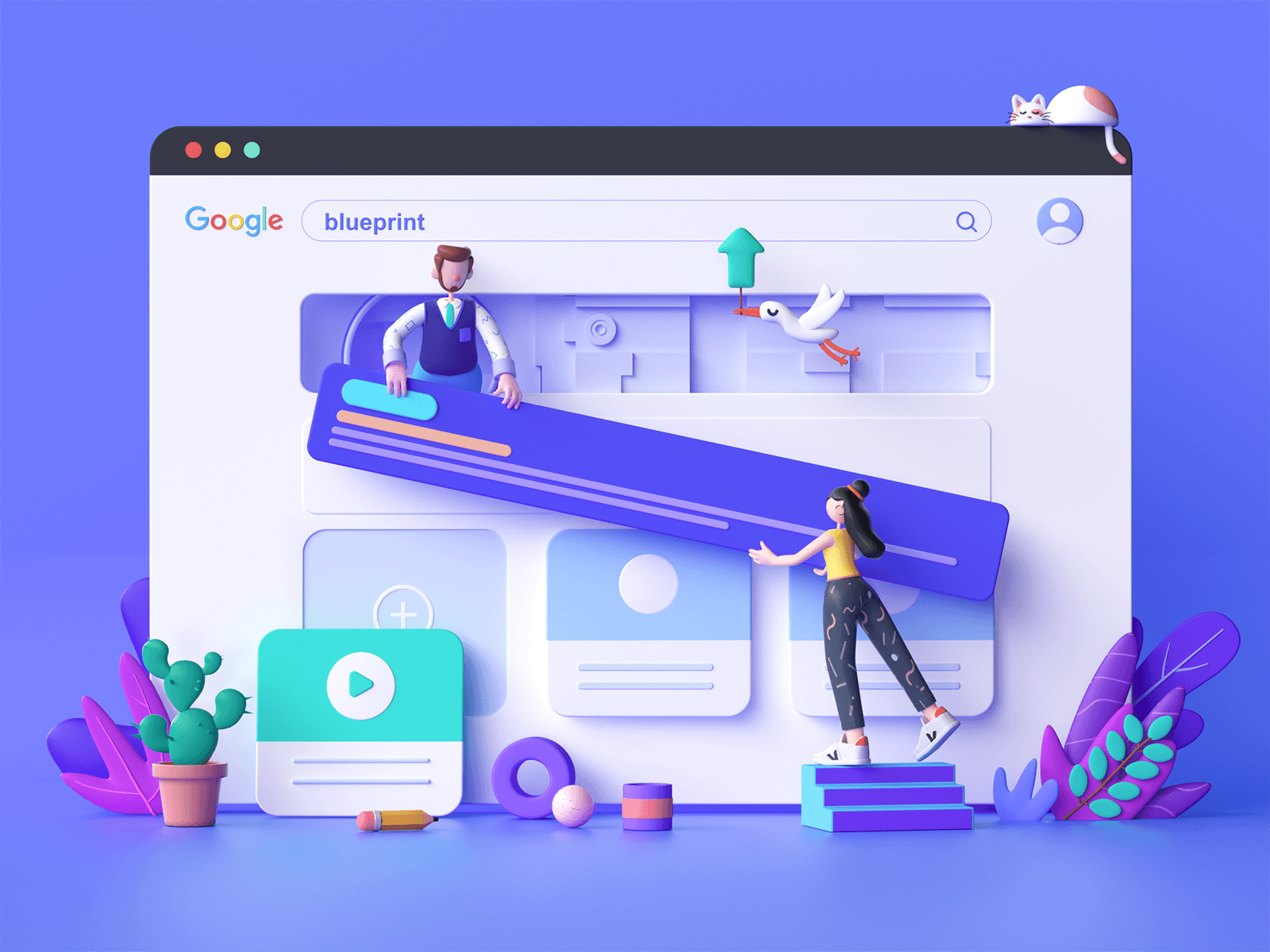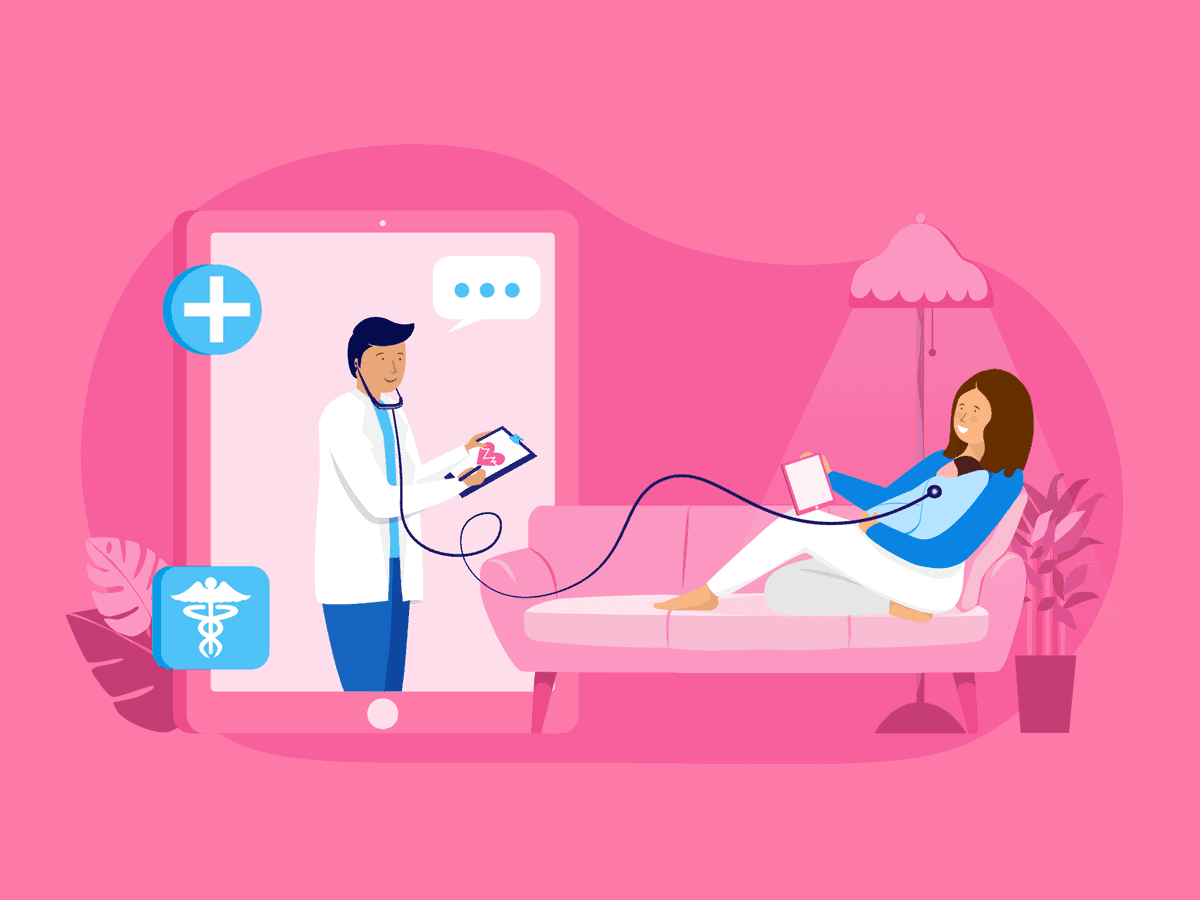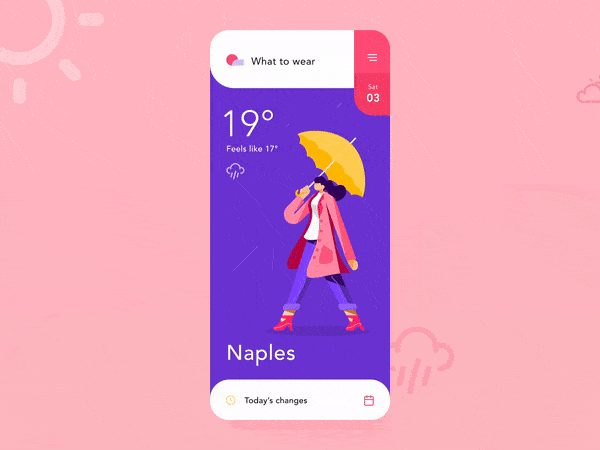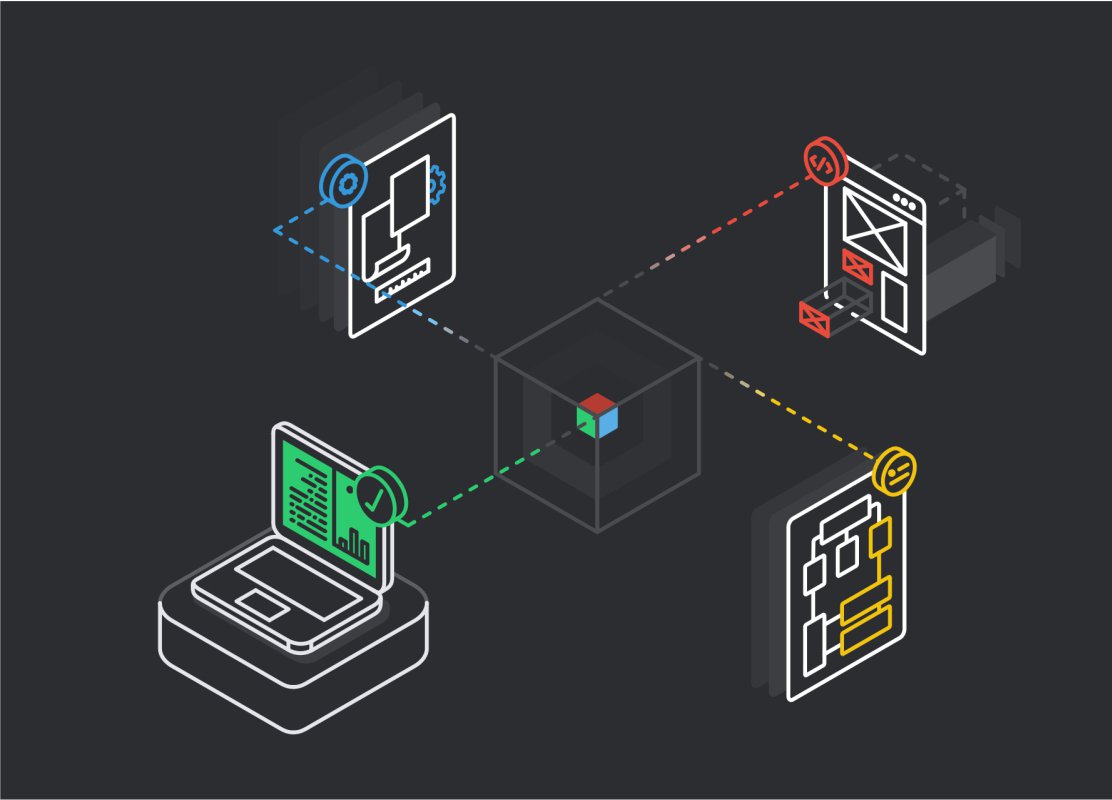
Stay ahead of the competition with rapid product innovation. This article provides insights into how you can achieve remarkable results by investing in continuous collaboration.
Stay ahead of the competition with rapid product innovation. This article provides insights into how you can achieve remarkable results by investing in continuous collaboration.
Discover the game-changing potential of AI marketing as it continues revolutionizing traditional marketing strategies.
The fintech space is changing progressively! It’s no longer enough to create an effective product that meets your customer needs. To stay ahead of the curve, you need to beware of the top fintech UX design trends to watch in 2023.

Remember how just a couple of years ago we were frequently discouraged by SIRI not being able to understand what we were saying and constantly answering the wrong question? Our cars had trouble with voice recognition and more often than not were calling the wrong person. Those of us who have accents had an even harder time talking to our devices and hoping to be understood. How many jokes have you heard about autocorrect? It is amazing to see how quickly technology improved in just a few years. Clearly, AI is already being used in a variety of ways to improve UX today.
Every one of us experiences the effects of artificial intelligence in our everyday life.
We all can agree that as technology continues to advance, AI will revolutionize UX design in a number of ways. Here are some of the most obvious changes we can expect to see:
But like with everything in life, it is important to know not only the strengths and benefits of the new technology but also the potential dangers.
Let’s take a deeper look at each one of those items.
Advanced data analysis can help UX researchers to analyze user data more effectively and accurately. It can provide insights that can lead to more personalized experiences. However, just like in market research, collecting more data doesn’t necessarily help with understanding its meaning. Designers and researchers may be tempted to rely too heavily on data instead of considering user feedback and intuition.
AI can help navigate the complexity of real-time personalization by quickly analyzing user behavior and preferences. The latter will allow to better adapt to the needs of individual users. Personalization, in its turn, can help to further improve chatbots and voice assistants. However, some users may be uncomfortable with the level of personalization that AI can provide. Hence, designers should be ready to face reluctance to accept the new technology solutions on the customer side.
There is a number of daunting and tedious tasks that UX designers do on an everyday basis. AI can help speed up design processes. By generating design variations such as layout, typography, and color selection, designers will be able to quickly test different assumptions. On top of that, design areas that can benefit from AI extend to design systems and much beyond.

At the same time, designers relying too much on automation can cause a loss of creativity. It can also shift expectations on how long the design process should take and promote the so-common “anyone can do it” attitude.
We also should not forget that automated systems require upkeep and maintenance. So designers must invest time and resources into maintaining and improving their automation tools. Always keep in mind, automation should be something that complements, rather than replaces creativity and thought.
One of the interesting areas where AI can make a significant difference is accessibility. Accessibility refers to the practice of designing products and services that can be used by people with disabilities, such as visual or hearing impairments. Companies should start looking into AI to help them with 508 compliance.
AI-powered voice assistants, automatic captioning, image recognition, and natural language processing (NLP) are critical elements of enabling people with disabilities to work seamlessly and productively. Voice commands can provide an accessible experience for people with visual or motor impairments. Automatically generated captions for videos and other media can make them accessible for people with hearing impairments. Besides, image analysis and description can provide users with visual impairments with the much-needed ability to understand visual content. And finally, chatbots and other conversational interfaces help people who need assistance with cognitive or language processing.
The use of AI can help developers of those systems generate code to provide much-needed features. In this case, we can view developers as users of intelligence-powered tools that increase their productivity.
It is hard to overestimate the importance of testing and feedback in any design process. AI can improve designers’ efficiency and effectiveness by automating testing processes, analyzing user feedback, identifying patterns and trends, and A/B testing.
Predictive analytics and NLP can be used to anticipate user behavior, extract important insights, and better understand user needs.
However, it is critical for designers to understand the limitations of AI and incorporate human feedback and intuition into the design process, balancing the insights provided by AI with the creativity and empathy of human designers.
Predictive analytics uses machine learning algorithms to analyze user data and predict future user behavior. Everything we’ve talked about in this article heavily relies on predictive analytics. AI helps with the analysis of large volumes of user data, making real-time predictions, optimization of user experiences, and testing multiple design variations.
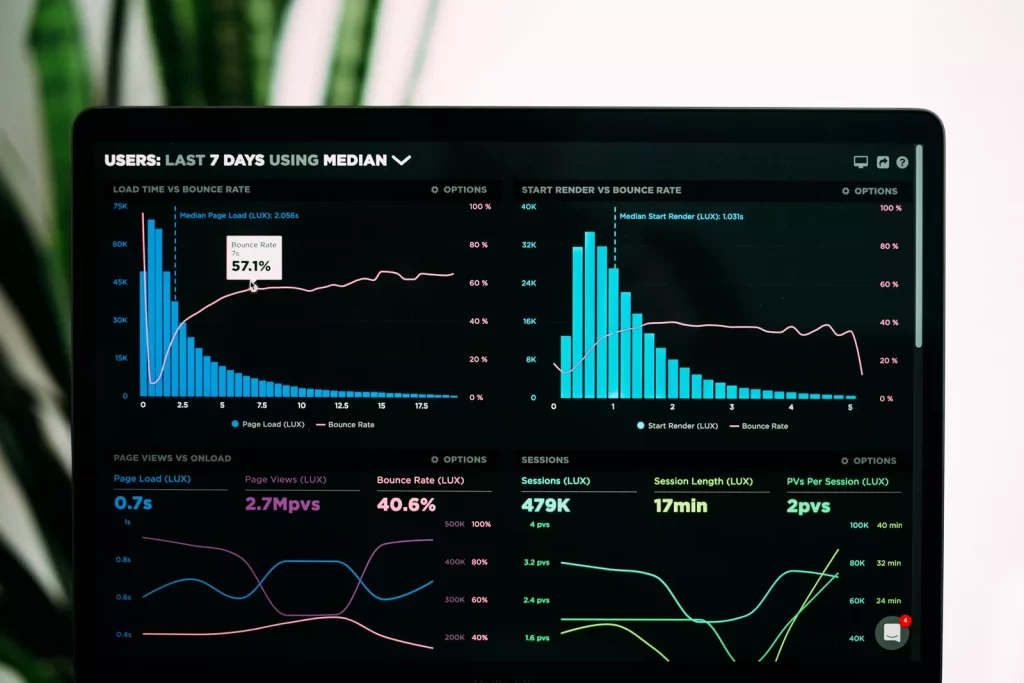
Yes, AI can help designers do their work, but let’s not forget about the enormous help that AI can provide for our users in their day-to-day work.
Incorporating generative AI into email applications and text editors can help people to communicate more effectively by providing them with initial structures of emails, PowerPoint presentations, and documentation.
Bringing AI into internal corporate portals can save time for thousands of employees during the onboarding process, or when seeking for right people or procedures within the organization.
Thousands of existing applications currently heavily rely on people using other applications or search engines (Google, YouTube, etc.) to provide additional assistance with their products. Imagine how powerful and productive those products could become if by using AI they could seamlessly bring this external content into their products.
We spoke a lot about the multiple positive effects that AI can have on design processes, but let’s not forget that there are multiple areas in which using AI (especially in its current state) can be rather dangerous.
AI algorithms are not perfect, and designers as well as their managers must be aware of the limitations of the technology they are using. The correct interpretation of user feedback is pivotal for a designer. However, the use of AI does not always guarantee accuracy.
The accuracy and reliability of predictive analytics depend not only on the data quantity used to train the AI model but also on the data quality. Designers may start relying too heavily on data from AI-powered testing and feedback tools, potentially overlooking important subjective experiences and feedback.
In addition, AI algorithms may reinforce existing biases in data, leading to biased feedback and potentially misleading design decisions. AI also doesn’t have empathy which is necessary to truly understand user needs and preferences.
When using AI tools, designers need to verify that data is collected in an ethical and responsible way, protecting user privacy and ensuring that the system doesn’t have negative impacts on users or society.
Overall, there is a lot of complexity associated with the use of AI in the design process, and it is important to find the right balance between possibilities and practicality. Designers should also beware of the limitations of emerging tools and take precautions to prevent misleading design outcomes.
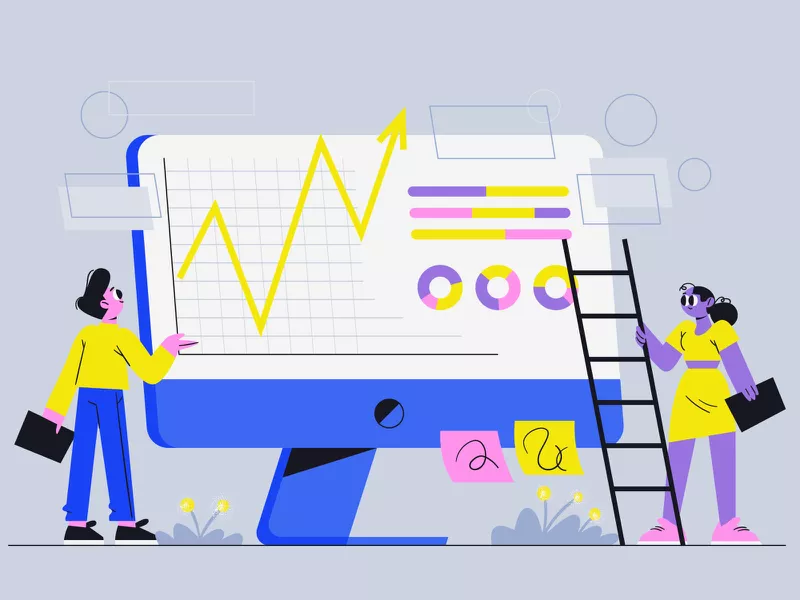
Source: https://dribbble.com/littlepinkdinosaur
Let’s face it: If your software as a service (SaaS) business wants to make money, user experience (UX) and user interface (UI) are key.
The way in which you design and present your software can be the difference between success and failure and between making a fortune and barely getting by. But few people know exactly how to use UX and UI to their advantage. That’s why I’m here: to give you the lowdown on leveraging UX UI for SaaS revenue.
We’ll start off by looking at how UX UI strategies affect conversion rates, then move onto some case studies of companies that are doing it well. With these tips, you can get on the road to success with UX UI in no time. Ready to harness its power for profitability?
Put simply, UX UI is the term used to describe the user experience and user interface design of a product. And it is more important than ever: As products move online, UX UI becomes a critical way to differentiate your product from competitors and engage users.
UX UI involves understanding how people interact with products, from the colors they use to read, to the structure of pages and content, as well as how users feel when they’re navigating your site. All these factors come together to create an experience for your users—one that is designed with their needs in mind, with an easy-to-use layout and flow.
When done right, UX UI can lead to increased user engagement and higher conversions, ultimately generating more revenue for your SaaS business. Take Dropbox, for example: Despite having a simple product offering, its intuitive design translates into high conversions and great user retention rates. This wouldn’t have been possible without its well-thought-out design.
From mobile apps to SaaS products, UX UI can be a key factor in generating product-led growth and a winning product strategy. It’s not just about creating an attractive user interface, it’s about making sure customers stick around and come back for more. Whether you’re developing an app or launching a new website, UX UI is a major part of the customer experience and should be carefully designed to meet users’ needs.
Good UX UI has the potential to create a product people actually want to use, while also driving revenue. Studies have shown that companies that prioritize UX design see higher customer satisfaction and retention, which leads to higher revenues. For example, one study found that companies who invested $1 in UX results in a return of $100 (ROI = 9,900%)
UX UI can also help drive conversion rates and customer acquisition by making it easier for customers to find what they need on your platform or website. By carefully designing the user interface and user experience, you can guide your customers down the path towards making purchases or signing up for services – ultimately increasing sales and driving revenue upwards.
Whether you’re a small business or Fortune 500 company, one thing is certain: you need to make sure that your users are having the best experience possible. This translates directly into increased revenue for your SaaS product. Let’s take a look at a few examples of how user experience and the user interface have influenced revenue.

Tesla’s major success in the automotive industry is due in part to its focus on excellent user experiences, from sales and delivery to purchasing, servicing, and overall ownership. Tesla simplified the entire car-shopping process for customers and removed barriers between customers and their cars.
Dropbox is another great example of transformational UX UI, where the latter redefines the way SaaS products operate; it completely redesigned its desktop app interface to make it easier for users to organize their files. Because of this focus on user-oriented design, Dropbox saw an 11% increase in monthly active users within three months of the launch of its new interface.
Another SaaS example here: Airbnb’s use of UX UI has been widely acclaimed as one of its most valuable assets. Through its unique mobile app design, Airbnb combines useful filters like price range and location with an intuitive map feature, allowing users to quickly find properties that meet their specific needs.
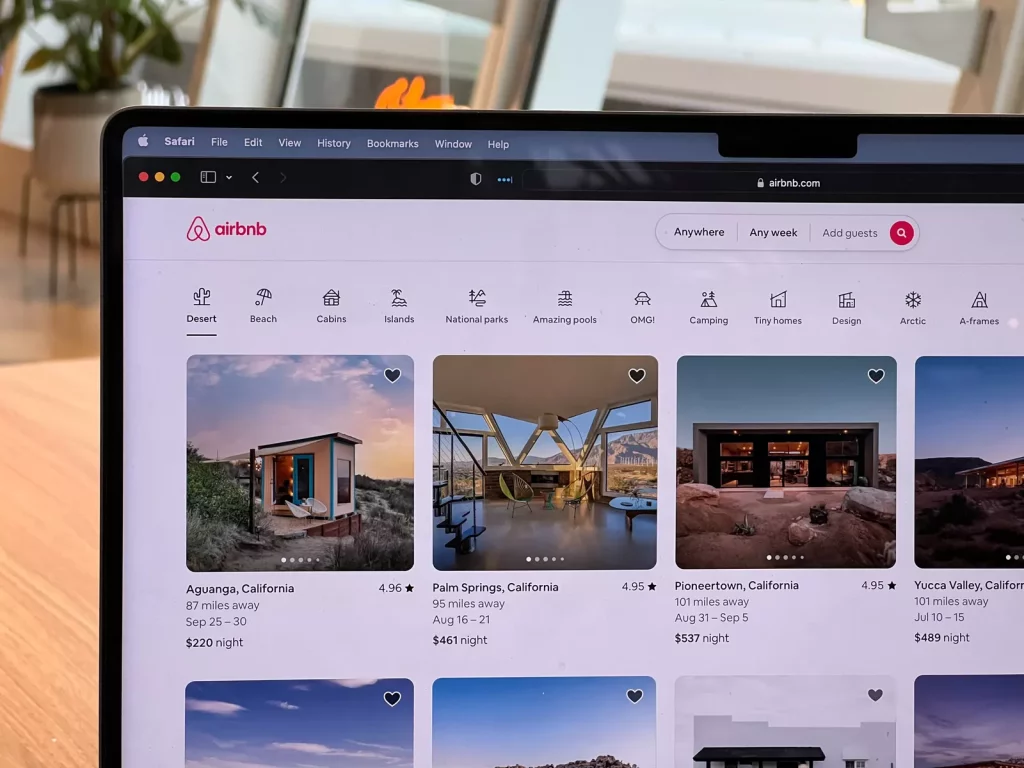
These examples demonstrate how UX UI can greatly impact SaaS revenue. By taking the time to focus on user-oriented design and features, businesses can ensure that they are providing the most efficient and enjoyable product experience for their customers, leading to increased engagement and higher profits.
You may be wondering about the benefits of investing in UX and user interface for your SaaS product. Well, there are plenty, and it’s likely to lead to an increase in your company’s revenue. Here are some of the key ones:
When a user is able to find what they need quickly and easily directly from your SaaS product, they’re much more likely to be satisfied. With the right UX UI design, users will be able to navigate your product more intuitively and with less friction, leading to overall customer satisfaction.
In addition to improved customer satisfaction, investing in UX UI can also lead to lower customer support costs. When you design a product that customers can use without help, you won’t need as many customer support personnel or resources. This leads to significant savings on staffing and resources in the long run.
When users are able to find what they need quickly and easily by using your SaaS product, they’re much more likely to purchase additional products or services that you offer. And when customers have a great experience with your product and understand how easy it is to use, they’ll be more likely to invest in other services you offer as well.
All of these benefits lead directly back into revenue for your company — more revenue streams from satisfied customers with better engagement and lower support costs all equate to higher profits!
You know that investing in UX UI is key to improving your SaaS revenue, but how do you go about actually doing it? A few tips to get you started:
Before you start implementing a UX UI strategy, the first thing to do is to define your user. This is essential in order to create an experience that’s tailored specifically to them. Understand their age, gender, location, and more — the more detailed your understanding of them, the easier it will be for you to make sure your design is as intuitive as possible.
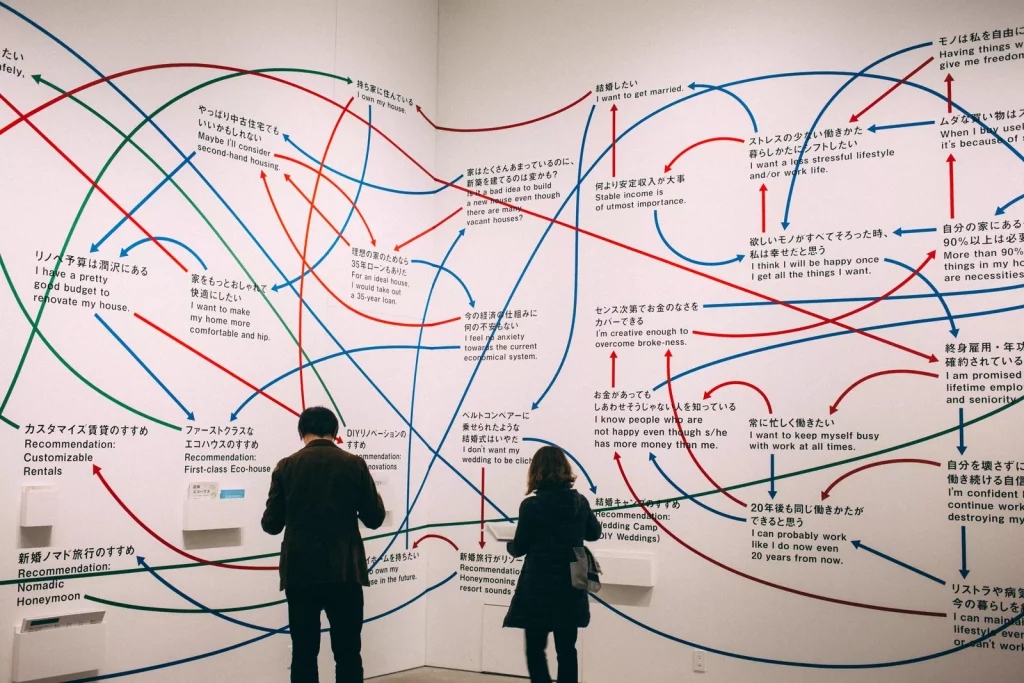
Creating a roadmap of where you want to go with your UX UI strategy is critical. Make sure that you include measurable goals for each stage of the process; this will help you track progress and know when you’ve achieved success in terms of SaaS revenue.
Usability and user experience should always come first when designing a website or app. Make sure that it’s easy for people to find what they need and complete tasks quickly. Focusing on usability also means ensuring that it works on any device — mobile users are especially important these days!
Once you have a prototype ready, test it! Ask your users for feedback and use it to refine the design until it meets their expectations. This will ultimately lead to better SaaS revenue. Additionally, testing each component of your design can help identify any issues early on before they become major problems.
The great thing about UX UI is that you can track its performance. The data collected from these metrics can help you make informed decisions about what works and what needs to be changed. Here are a few key performance indicators (KPIs) you should consider tracking with each UX UI change:

By tracking these metrics over time, you can identify patterns that indicate whether your new UX UI design changes have been successful in increasing customer satisfaction, user engagement, and SaaS revenue growth.
Summing up, UX UI design can be a powerful driver of revenue for SaaS businesses. With the right strategy and focus on user experience, businesses can tap into product-led growth to fuel their bottom line. The case studies of Tesla, Dropbox, and Airbnb demonstrate that UX UI designs need not be complex nor expensive to address user needs, but providing an intuitive and informative UX will pay dividends in the short and long term. The success of these companies is proof that user experience design is a valuable opportunity for businesses of all sizes to unlock more revenue.
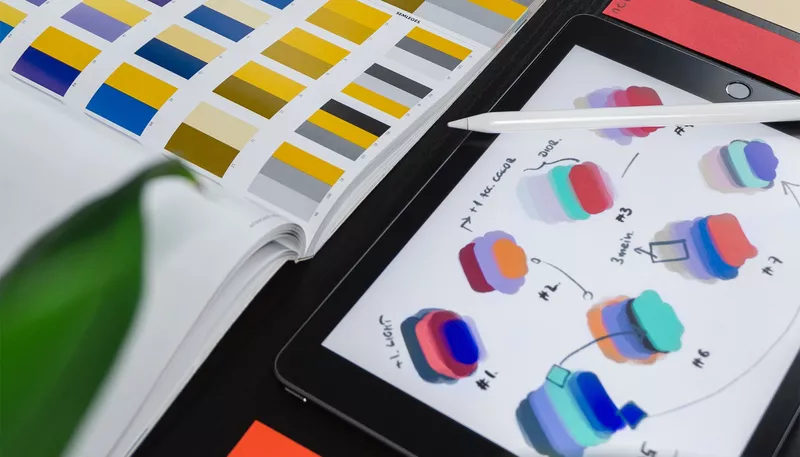
We all know the importance of good user experience when it comes to growing a successful software as a service (SaaS) product. But pushing beyond good UX and into great UX for your product requires more than just tweaking design elements here and there. It requires an understanding of user behavior and an understanding of how best to engage users in meaningful ways. That’s where design systems come in!
Design systems are a powerful tool that enables teams to create consistent, effective experiences across all platforms and formats. At the same time, they help teams understand the larger design patterns they need to grow their products.
In this article, we’ll explore how you can unlock the potential of your SaaS product with the power of design systems, what benefits they bring to the table, and ultimately how you can use them to take your product-led growth efforts to the next level!
Have you heard about design systems yet? They’re unifying forces behind great UX, driving smoother product development and enabling faster product iteration. But what exactly are they?
At their root, design systems are living documents that serve as the single source of truth for all your design decisions. From there, they bring together component libraries, user flows and interaction patterns to create an integrated set of design standards. This not only provides a consistent look and feel but also ensures that your designs remain true to brand standards. Plus, it simplifies the process for teams working on different products/versions.
In a nutshell: Design systems are a powerful way to drive product-led growth. Not only will they give your SaaS product a consistent look and feel while allowing rapid iteration over time, but they’ll also strengthen team collaboration and help you reach new heights with your user experience!
If you want to unlock product-led growth for your SaaS product, design systems are the way to do it. A design system is a set of libraries, tools, and guidelines that help create a consistent user experience across the product’s user interface. When implemented correctly, this can supercharge your SaaS product’s growth.

Design systems have various advantages for SaaS companies, allowing them to:
So whether you are in the early stages of designing a new SaaS product or revamping an existing one, investing in an all-inclusive design system should be at the forefront of your development strategy.
You may not know this, but UX design systems are the key to creating an optimized Saas product-led growth strategy. In a design system, each element has a specific purpose. Let’s take a look at what those elements are:
Design principles define the overall philosophy behind the product. These can help guide decision-making and ensure that product features are always aligned with overarching goals.
Design patterns define how users interact with the product—they provide a consistent interface across all user channels. This could include things like buttons, menus, forms, and other common UI/UX components.
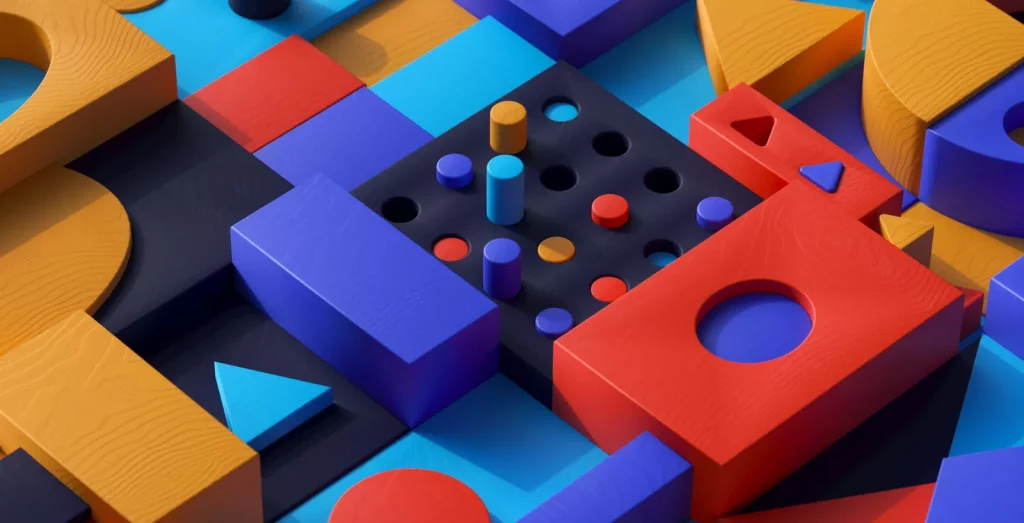
The style guide sets the tone for esthetic consistency, outlining everything from typefaces and color palettes to image sizes and placement. All these details help define the visual representation of the brand in all of its touchpoints.
In addition to these elements, there should also be guidelines in place which outline how to use them together. This way, everyone involved knows what is expected of them when building out the product. By leveraging all of these components as part of your SaaS product-led growth strategy you can make sure that you are always providing an amazing user experience!
You may not know it, but using a design system can be a major boon for your SaaS product-led growth. A design system helps your product look and feel like the same product, no matter which device you’re using. On top of that, it helps keep costs down in the long run since you can reuse components across different platforms.
So what techniques can you use to establish an effective design system? Here are some of the best practices:
Rather than taking on too much too soon by creating a design system all at once, start out small. Focus on developing a library of core UI components that are shared across multiple projects; then, once those components have been deployed and tested in production, you can expand the system to include more reimagined elements.
Maintain your design system through regular documentation and testing of existing components—and add new ones as technology and user behavior evolves over time. Think about how color palettes change from year to year or how new trends emerge in UX design; you want to be sure that your design system is always up-to-date with the latest industry trends and best practices.
Make sure everyone on your team is properly educated about how to use the design system correctly. Otherwise, it’s all for naught! Depending on the size of your team, you might consider having dedicated training sessions with detailed documentation on how to use each UI component correctly.

By following these best practices when establishing a design system, you’ll be able to create an efficient way for users to interact with your SaaS.
With the rise of digital products, it has become important for companies to provide a consistent user experience across all platforms and devices. This is where design systems come in.
Design systems are collections of reusable components and styles, organized into a library that can be used and adapted to create new designs more quickly and efficiently. By giving developers and designers a framework to work within, design systems facilitate collaboration across teams and help ensure consistency of product design.
This makes them great for SaaS products. They make the process of scaling easier by allowing designers to quickly create new user interfaces in line with the existing visual language. Design systems also encourage innovation by giving developers more flexibility to experiment with new ideas while keeping the product on-brand.
Design systems can be incredibly powerful tools for growing your SaaS product – so why wait? Take advantage of this technology today!
You may not know this, but many of the world’s most successful SaaS companies are using UX design systems to achieve product-led growth. In fact, these carefully planned and tested design systems are allowing these businesses to quickly iterate on their products while also increasing customer engagement, reducing development costs, and ensuring reliable user experience across a wide range of digital platforms.
Here are a few examples of SaaS companies that have experienced success from using UX design systems in their products:
Their design system promotes efficiency in the design and development process. By providing a library of pre-built design components and patterns, designers, and developers can quickly and easily create new screens and features, saving time and reducing errors. The design system also promotes increased collaboration between team members, as everyone is working from the same set of guidelines.
By creating and implementing a custom design system, 6sense was able to speed up the engineering process from four weeks down to two days. This meant faster delivery of new features while also reducing platform errors and the need for expensive fixes. In addition, thanks to its organized structure, people were better able to find the components they needed without wasting time searching through code bases or manual documents – saving them valuable time in the long run!
Thanks to the use of an enterprise-level UX design system, Atlassian was able to ensure consistent user experience across multiple platforms. This not only saved them development time but also improved customer satisfaction, leading to increased user loyalty and revenue growth.

Ultimately, with UX design systems at your disposal, you can unlock product-led growth and gain a competitive advantage in the long run, quite like Atlassian did.
In conclusion, it’s time for SaaS product-led growth to unlock its potential with UX design systems and have the user experience at its core. Design systems allow for greater collaboration between teams, faster time-to-market for product design, and a more consistent user experience. With a robust design system in place, teams are able to pre-empt customer usage and create an improved user experience.
Design systems are the key to success for product-led growth. With a well-thought-out system, your SaaS product can go from serviceable to standout, and your brand will be the one to watch!
Using only paid ads or only content marketing doesn’t work? Create a strategy that combines the best of both worlds and gets you more leads and a higher ROI!
Using only paid ads or only content marketing doesn’t work? Create a strategy that combines the best of both worlds and gets you more leads and a higher ROI!
The financial sector heavily relies on complex bureaucratic procedures and the necessary abundance of strict regulations. That’s why most finance verticals traditionally have been considered stressful activities that not everyone can handle effectively. However, as the financial industry embarks on the path toward digital transformation, this status quo is changing. Now, financial technology user experience (fintech UX) is front and center.
Well-thought-out fintech UX design of apps and tools has transformed burdensome pieces of our financial routine into relatively simple and often quite enjoyable tasks. Today, we have all reason to believe that UX designers will drive further growth and continue the modernization of the fintech space.
Let’s take a look at how different fintech products with outstanding user experience design have empowered millions of users. Not to mention how they make managing money, investing, and raising funds much easier to do in a smarter way.
Mobile applications for tracking personal finances are extremely popular nowadays. Statistics show that about 63% of smartphone owners use at least one app that helps them keep track of individual spending. In general, these fintech apps allow users to bring all their accounts into one place and check how their balances change anytime. Consequently, people become more aware of where their money is going and, ultimately, become more financially conscious.
The main challenge of most personal finance applications is that they need to display a large amount of information without overwhelming users or sacrificing usability. A clear fintech UX with smooth virtual interactions is the way to reach this goal.
For instance, Mint, a widely-used budgeting app, provides several predefined categories of personal expenses. Users just need to link their accounts to the application and set limits for each category. The app automatically tracks all transactions and sends notifications when a person is close to the threshold.

Another great example is the Simplifi app. It was explicitly designed to decrease the navigation time required to complete various day-to-day financial tasks. Easy to comprehend dashboards let users see exactly where they stand. Users can also get more detailed info on spending in just a few clicks.

Banking and financial institution apps also belong in the group of financial products that significantly simplify our financial life. Most of them are provided by fintech companies or banks and allow clients to manage their financial matters right from their smartphones. The main goal is to make all banking services accessible at the user’s fingertips while avoiding the complexity that is often associated with financial transactions.
When building a fintech user experience design, the necessity to combine different consumer needs in one consistent user flow is the biggest issue faced by UX specialists. The app has to be functional, reliable, comprehensive, and easy-to-use at the same time.
Bank of America came up with a great solution in this regard. It included a virtual assistant, Erica, in the fintech UX design of its app. Erica guides users through different features and can complete some simple tasks itself (e.g., checking account balance) just like iOS’s Siri.
It’s also crucial to understand that the fintech UX of banking apps is one of the elements of the overall customer-centered experience. In other words, there should be no distractions, unambiguous choices, or too much creativity.
Like any other communication with a bank, interactions within the app should be straightforward, professional, and friendly. That’s why a subtle, user-friendly, and minimalistic user interface is the optimal choice for mobile banking.

Trading apps are the fintech product group in which a user-centered design is probably valued the most. They aim to help people make trades in a simple and efficient way. But most stock trading applications offer many more features than just the capability to buy and sell stocks online.
They allow users to view analytics and statistics in real time (e.g., how the price of a stock has been changing). However, users can also read relevant news, develop their own investment strategy, automate transactions, and so on.
To create a seamless fintech design for a stock trading application, UX product designers should understand how a stock market works. Also, they need to know basic investment terminology. It should help them split the data into logical blocks and make critical information more noticeable.
If you want to get an example of how an app can lower the barrier of entry to the stock market, take a look at Robinhood. Its usability is so good that some people are joking that using Robinhood is easier than using Tinder.

There are also investment apps like Webull that are targeted at experienced investors. They provide users with more advanced trading details. And, logically, their visual design looks a little bit more overwhelming. But it’s only at first sight.
In practice, all these charts and diagrams simplify the perception of information for traders, helping them more easily make more informed decisions.

Crowdfunding platforms are a popular way to raise money for projects, especially in innovative and creative areas. They’ve become a meeting point for people who have brilliant ideas and people who are ready to invest in them.
In general, there are several different types of crowdfunding (e.g., donation-based, investment-based). Nevertheless, most of them require the platform to build trust from all sides in order for it to work as intended. Since everything happens online, this trust is largely established through great financial technology UX.
For example, fintech UX often plays an essential role in making visitors stay longer on a crowdfunding platform. It also defines how easy it is for users to discover projects and how much effort it takes to transfer money to the platform or project.
If you visit GoFundMe, a well-known crowdfunding website, you’ll see how a well-built fintech user experience creates a strong foundation for trustful and engaging crowdfunding.

In particular, all GoFundMe initiatives are divided into categories (e.g., medical, animal, business), which considerably simplifies browsing of fundraisers. The initiatives also have brief descriptions explaining the reasons why the funding is needed.
Once you open a page with an initiative, it becomes immediately clear how much money has already been raised and who made these donations. Besides, the website contains success stories that happened thanks to GoFundMe. Overall it is a great way to establish user confidence and social proof.
Mobile payment services became a popular alternative to cash and traditional money transfer methods a few years ago. But the COVID-19 pandemic caused an even greater boost in their usage. People make payments via mobile devices to buy products or services online and in person, split expenses with friends, and accept money from other users.
While an application needs to contain the necessary features to perform all these functions, convincing us that everything went well is a fintech UX design’s task. No one would use a mobile payment service if it made users feel anxious every time they purchase something with a smartphone or tablet. To create an effortless and stress-free payment experience, designers should work on its simplicity and intuitiveness. Apple Pay serves as one of the best examples of these virtues today.
Another important element of fintech UX for mobile payment services is interaction design. Simply put, UX designers must consider not only a user journey within the app but also the broader context of user behavior.
For example, it includes the way the application communicates with a user. Does it provide the right amount of information? Are all messages clear enough? If an error occurs, how easily can a user understand it? These are just some examples of potential communication pitfalls. A great example of how to approach these elements is Facebook Pay which deals with this just about perfectly.

Business intelligence solutions help professionals who work in the financial services space stay on top of the most recent news and receive other important data insights. For example, these platforms can provide detailed information on investor mandates, managers, and consultants. They can also aggregate analytical content from other resources or create unique expert articles to keep users up-to-date with market changes.
Our team at m7 provides consultancy services and UX designing for fintech companies. We recently received a request from a client who needed to optimize the fintech user experience on two business intelligence platforms. Before approaching us, they had gathered user feedback and found out that the navigation was too difficult and the user journey wasn’t consistent enough.
To solve these problems, we did market and user research. Our team also identified customer (end-user) priorities by conducting contextual interviews with all user personas. The next stage was wireframing and prototyping. Based on the collected information, we developed new user journeys.
Our designers focused primarily on improving the end-users search experience. This makes it easier for the different category customer groups to use our client’s tool to find the most relevant information. Additionally, we provided suggestions for increasing the level of personalization the end-user would experience.

As a result, our team created a new platform design that helps the client’s customers to interact with platforms much more efficiently.

Strabo was designed with the global citizen in mind, allowing users to connect and access their financial accounts in different countries. The dashboard is intuitive, leveraging familiar functions that the modern professional can navigate through. Furthermore its' fully customizable, which allows the user to filter/sort their data the way they want rather than overwhelming them with too much information.
In the financial technology market, UX design often defines whether a product will become a success or not in the short and long term. The fact of the matter is that financial apps deal with huge amounts of complex data. Without seamless user journeys and clear interfaces, users can get swamped by numerous features and overwhelming data.
As a result, they won’t be able to complete their financial tasks effectively. That’s why usability (and usability testing) can never be neglected. Otherwise, there is a risk that a solution will make users’ money chores even more unbearable instead of simplifying their financial lives.
In enterprise application development projects, decision-makers pay a lot of attention to the product functionality, while the end-user experience often takes a back seat. HR portals, task management systems, CRMs, and intranet sites — we all know how cumbersome and frustrating they can be. Oftentimes, companies’ executives see the true value of a decent enterprise UX. After all, they test and examine the tools from a very different perspective than most who’ll use the software every day. Not to mention, training and experience using the corporate software will overcome any lack of intuitive design, won’t it?
This lack of appreciation for intuitive design and usability is, unfortunately, quite common. However, it’s fundamentally wrong and can have significant consequences for any organization. In this article, we’ll explain what enterprise UX design is and why it matters.

Before we jump right into the details, let’s outline the basic definitions. Customer UX (or “consumer UX”) is a user experience design that belongs to apps and other digital solutions created for consumers or the general public. Meanwhile, enterprise UX is applied to the internal software of a specific organization and used predominantly by its employees. While the definitions help categorize the different terms, there are greater differences between the two types of UX design.
When a design team creates the UX for a customer app, it usually knows only the target audience’s key characteristics such as gender, occupation, age, etc. To study the landscape, UX designers usually do extensive market research. But it doesn’t allow them to identify a specific group of individuals who will use the product. At the same time, the scalability of the software product remains largely unknown until it is put on the market. In other words, there’s quite a lot of uncertainty. That’s why the design process consists of testing and verifying assumptions at different stages.
The situation is the opposite when it comes to designing enterprise software. In this instance, the group of future users is known from the very beginning. When a team works on the enterprise UX design, know who will use a solution. The potential scaling up is also limited to the actual or projected size of one organization. This means that the designers who create enterprise UX need to make full use of the available data.
The process of building customer-oriented products is guided by user expectations, pain points, and feedback. Although the product idea might not come from those that will use the software most, it’s in the decision-makers' best interest to have a product the users will love. If users’ needs and wants aren’t considered, a product won’t become popular, and it will generate fewer sales or downloads. That’s why significant effort and investment goes into making a product user-friendly and optimizing for customers’ digital experience.
In enterprise projects, either independently commissioned software or as part of a more comprehensive digital transformation process, usability is often misinterpreted in the background. Employees (the majority of end-users) rarely have a choice about corporate business systems, and they rarely have an impact on the product development process of new systems. High-level executives make most of the decisions. And the lens they see and evaluate software is often significantly different from most users. Often skewing toward functional requirements and top-level project management requirements. As a result, corporate software performs all the required functions but are hard-to-use, clunky, sluggish, and ugly.

Companies that exclude usability for the end-user, focusing squarely on product functionality, can potentially save some money when commissioning the software. However, at the end of the day, they lose more over time as they don’t get the advantages that quality enterprise UX design brings. Here are the most important benefits an organization can expect when it factors in end-users’ preferences in the design process.
Some executives would rather cut corners to save money in development rather than invest in thought-out enterprise UX design because, for them, it’s like throwing money down the drain. This is a misconception. In practice, investments in UX produce a greater cumulative return over time. If corporate software is easy-to-use, it helps employees perform their routine tasks. Consequently, their productivity is higher, which leads to higher revenues for an organization.
Besides, enterprise users usually spend 8-10 hours a day working with the company’s business systems. When such systems have refined enterprise UX design, actions that may take employees 4 to 6 clicks to execute may be done in one click-and-drag motion or 2 clicks. As it’s saving them time every day, it’s bound to have a positive impact on performance over a year.
As a professional design and development agency, we know how the productivity benefit works in practice. After our team created a new enterprise UX design for our client’s KYC platform, its employee productivity has increased by 39 percent.
Many employees working at larger corporations have to deal with a huge amount of raw data all the time. A good enterprise UX helps them to understand and process data quickly and effectively. When designers create corporate solutions with end-user needs and the latest UX trends in mind, key insights are much easier to find and understand.
Core enterprise UX components like well-constructed user journeys, dashboards, and data visualization allow employees to grasp the information with minimum effort. Empowering them to make better informed decisions and avoid mistakes. This applies to employees regardless of position, as decision-making is simplified within each area of responsibility.
Effective cooperation is a key to the success of any group activity, and enterprise workflows are no exception. But it can be a real challenge when a development team builds corporate software without paying much attention to enterprise UX. Imagine, for example, that an enterprise product has a chat, but its user experience design is really bad. Employees can send each other messages but it takes five steps to find the message, open it, write a reply, and send it. Is such a business system going to be a help or obstacle? It’s quite obvious.
Good enterprise UX design should consider both employees’ overall behavior and micro-actions to make the teamwork barrier-free and efficient. In the post-COVID-19 era, it’s even more important due to the global shift to remote work. Essentially, designers who create enterprise UX should figure out how to make interactions within the software system resemble real-life interactions and environments as much as possible.

In general, the enterprise and consumer UX have a lot in common in terms of design approaches and stages of creation. But still, enterprise app development projects have some specifics that UX designers must be aware of. To best illustrate this, we’ll discuss one of our relevant projects.
Our enterprise UX project was related to the fintech sector. The client, a financial institution, came to us with the request to create a new user experience design for its KYC (Know Your Client/Customer) platform. A core aspect of the project is that it’s mandatory for banks to verify the identity of individuals they provide services to. The process is called “know your client,” and employees involved in it constantly process an excessive amount of data. In short, our main task was to make the complex data easier to follow for the client’s financial officers. Here is how we accomplished it.
An enterprise UX design system should be based on a deep understanding of user needs. Although the company’s executives and project managers may know for sure what a system must do, user research is still necessary to figure out how it should do it. The good news for UX designers is that a target audience is always defined and reachable. But unlike customer apps that often support a few-step process (think of Uber), enterprise solutions focus on rather complicated workflows. So, determining user roles and studying their pain points requires an all-round approach.
On our fintech project, the first thing we did was user research. We asked the employees about their working routine and the tasks they need to complete to do their part in the KYC process. Based on this information, our team divided all employees into user roles (i.e., the analyst, manager, case coordinator, KYC head, administrator, and auditor). We also determined the core user (i.e., analyst). Finally, our team listed primary responsibilities and key interactions for each role.
Building a user flow is a central stage of the enterprise UX designing process. Basically, designers should take the client’s requirements, connect them with user needs, and create wireframes. The important aspect here is to put a focus on simplicity, not creativity. There is usually much less space for experiments in enterprise UX projects than in consumer UX projects. The reason is that there is no goal to entertain or impress users, just to make their life easier.
To complete this stage of our fintech project, we created a schematic representation of a user flow. To do that, we used task analysis performed by our team after user research. Having all employees’ duties and connections laid out in front of our eyes, we created wireframes and then developed a high-fidelity prototype of the KYC platform.

When designers work on enterprise UX projects, some often skip this stage of a design process or collect feedback from the company’s executives instead of end-users. But it’s a huge mistake. Business managers usually have a bird’s eye view of the processes and operations. But they don’t know how everything looks from the inside. When it comes to product usability, the details matter a lot. That’s why gathering user feedback is critical. In most cases, designers have to perform several iterations of this step to create an enterprise user experience design that is highly tailored to the end-users’ needs.
To get a users’ perspective on the UX design that we were working on within the fintech project, our team conducted a number of user interviews. We asked interviewees to specify both positive and negative aspects that they noticed while performing tasks. We also jotted down our own observations of how a user interacts with a system. As a result, we created a truly user-centered enterprise UX design that helps the client’s employees be more efficient, and less frustrated, at work.
For corporate software, a good enterprise UX design is as important as functionality, and quite frankly should be standard. Despite some popular misconceptions, it brings much greater value than just making employees like the product. If end-user needs are taken into account, their productivity is higher, which has a positive impact on the company’s profits. Besides, a quality enterprise UX design allows employees to work with complex data more effectively and collaborate with colleagues more easily. So, the investments in enterprise UX design always pay off in the end.
UX design is a dynamic field that brings us new trends every year, and the last twelve months are no exception. The global COVID-19 pandemic and national lockdowns have brought a sudden change to the way we interact with the world, both digital and real. People have not only started to spend more time online; they’ve started to think and behave differently. Naturally, the coronavirus situation has impacted the current state of UX and formed a foundation for the UX trends of 2021.
This article outlines the main 2021 user experience trends that we believe will dominate and are likely to shape the year to come. Take a look and see which trends you can make use of to outrun your competitors and stand out from the crowd.
We’ve talked about voice user interfaces (VUIs) in our State of UX for 2020 projection article. As this year has shown, voice commands remain one of the hottest trends in UX design. It’s safe to say that you shouldn’t ignore it for the coming year.
There’s no doubt that, in 2021, voice chatbots and virtual assistants will keep growing in popularity. Users continue looking for simplicity and efficiency when it comes to digital experiences. Market demand, high expectations, and the rapid development of artificial intelligence technologies have left brands no choice but to include voice-based features in their products.
Already, numerous businesses are laying the groundwork for widespread VUI implementation. For instance, Starbucks has introduced an AI-based chatbot called My Starbucks Barista. Its goal is to improve the coffee-ordering experience by allowing users to buy their favorite beverages via voice commands.
Minimalism is probably one of the most noticeable trends in visual design these days. Users are experiencing a constantly growing number of critical messages that website owners want to deliver. Cookie popups, discount ads, and various notifications aim to engage and convert website visitors, but they also exhaust our attention. This is where minimalistic user-centric design comes to the fore.
But “minimalistic” doesn’t mean “dull” or “primitive”; it means “elegant” and “efficient.” Although a limited number of colors, design elements, and bright combinations is a must, UX designers can still play with proportions and compositions. Besides, the functionality of elements comes to the forefront, and the ability to properly highlight product features and deliver the right message requires a lot of creativity. Components with only decorative purposes, on the contrary, are gradually losing their relevance.

Clarity of content, messages, and navigation is another important aspect of the minimalistic approach to UX design. Information overload is a pain for most modern audiences – meaning that website owners should strive to make their UX writing clear and concise.
Negative space is a big UX design trend that has grown out of the market demand for minimalistic UI. Simply put, negative space is the empty areas on page layouts either around the objects (macro space) or inside them (micro space). It has already become a separate design element that plays a vital role in visual aesthetics and user experience optimization. Google’s homepage, Apple’s official store, and some websites made in Webflow are great examples.
Leaving some space empty, adding “silence” in the design, must always be meaningful. Otherwise, users can perceive it as a lack of information. The main function of the negative space is to declutter a web page in order to draw users’ attention to crucial objects and messages. Establishing a sharp content hierarchy helps UX designers draw the user’s focus on what’s most important.

The negative space is also sometimes referred to as “empty space” or “white space.” All these terms are interchangeable. When the space is free of elements and you can also use this user experience trend in dark mode or with any other color.
Online experiences after the COVID-19 pandemic will not be the same as those we got used to. UX design reflects the imperfection in a relatable way. To make the brand’s digital presence more relatable, designers intentionally implement some “imperfections” in layouts. It may be anything, from hand-drawn objects to extraordinary elements in compositions or proportions.

In general, imperfect design can be an excellent way to demonstrate the brand’s identity and highlight its uniqueness. However, if you want to apply this UX trend, you have to remember one critical rule: there needs to be a balance. It won’t work if you overdo things.
The neumorphic style is a combination of two other massive approaches in UI design, skeuomorphism and flat design, which are often considered opposite to each other. Skeuomorphism is all about mimicking real-world objects and the way we interact with them.
It was popular a few decades ago when hyperreal elements were necessary to create an intuitive and user-friendly UI. A trash bin is one of the examples. On the other hand, flat design is a more recent, simplistic concept centered around two-dimensional elements, minimalism, and bright colors.
Neumorphism takes the best of both worlds. It uses graphic-intense elements, shadows, and gradients to make buttons and cards resemble the objects in nature while not precisely recreating them. The neumorphic style doesn’t push realism to an extreme extent. Instead, it strives to achieve a “soft” look with pale colors and subtle contrast.

Neumorphism has been one of the most discussed topics among UI/UX professionals for the last year or so. While there are still not many real digital products whose user interfaces follow this approach, a lot of designers are excited about this concept. Professional platforms like Behance and Dribbble already contain a number of neumorphism examples. So we have all reasons to believe that this trend will finally find its place in our phones and laptops in 2021.

Parallax effect and 3D elements are not something entirely new in UX design. We have already seen how they are implemented in many web design solutions. However, we still observe these user experience trends marching ahead in popularity.
First, it’s a significant increase in use. Today, 3D elements and the parallax effect are no longer fancy exotic things on the web. They’re more commonplace, especially on websites and apps representing fashion and e-commerce brands that want to stand out.

Another tendency is the attempt to combine a parallax effect and 3D graphics in one interface. When you use parallax scrolling, the background of a web page and foreground elements are moving at a different speed. It alone creates a feeling of depth. By adding 3D objects to this effect, you can create a truly immersive experience that will stay in users’ memory for a long time.

As the screens of our devices become wider, it’s given rise to the asymmetrical trend in UI/UX design. In general, asymmetry is an attribute of brutalism, a style in art and web design that is opposite to minimalism. However, if used separately from other brutal design elements, it can make your website look interesting while allowing it to remain subtle and elegant.

The UI/UX trend for asymmetrical layouts is often implemented along with other creative web design techniques, such as a broken grid, overlapping elements, and split screens. You can also apply asymmetry to typography. If done right, it will make your brand messages more noticeable and memorable.

However, it’s vital to keep in mind that asymmetrical design doesn’t mean “randomly placed UI elements.” The unusual way of locating objects on layouts should guide a user’s eye in the right direction and help a brand emphasize important information.
Today, when we enter a random website on the internet, chances are we’ll see GIFs, micro animations, animated illustrations, or some other elements of motion design. Animations remain popular in user experience design, and the frequency of their use keeps growing.
Besides being visually attractive, moving objects can improve user engagement and simplify navigation. They can also breathe life into digital products or services – making them more personable.

If you want to use this software development trend in user interface design, it’s critical to do it wisely. Objects that float on a screen with no particular purpose can confuse visitors, prompting them to leave a web page even sooner than they’ve planned. Animation elements shouldn’t make user interfaces unnecessarily complicated, either. They always must be relevant, valuable, and smooth.
Information architecture is the way different pieces of content are organized and structured on a page. It’s an essential element of user-centered design (UCD) that aims to make digital environments more comfortable for users. Building an effective, useful, and coherent information architecture is a mandatory stage of the UCD process, along with user research and usability testing.

To create a decent information architecture, UX designers need to have a solid understanding of the product’s target audience, their behavior, and the reason they use a digital solution. Users should be able to achieve the desired result without it taking too much effort. That’s why the user's goals, clear navigation, and content representation (including blind-spot monitoring) must always be taken into account at the wireframes stage of the design process.
We created this projection article to give you a leg up in today’s hyper-competitive digital world. All UX trends mentioned here can definitely improve the user experience of practically every software solution or website. They can also make your product more visually attractive to its target audience, even when user expectations are high.
Nevertheless, the past year showed us that it’s impossible to anticipate everything. So, we’ll keep you in the loop and provide a regular update on what’s happening in the UX area.
Ever-evolving software technologies and no-code or low-code tools are transforming a traditional way of creating digital products. In the last few years, creating software can be done faster, simpler, and with a lower barrier of entry than ever before. One of the reasons is that user-centered design has come to the forefront of most software development processes. At the same time, the need for the software creator to code is being replaced with drag-and-drop interfaces, freeing up space for creativity, rapid prototyping, and continuous testing.
But does this trend mean that custom coding will completely vanish in the next few years? Or, can these two approaches exist in parallel, complementing each other?
This article will explain the concept of no-code and low-code development in the context of building user-centered design. Ideally, you’ll find out whether you’ll benefit more from a low-code development approach, or if custom coding is what you need for your projects.
As the name suggests, low-code or no-code development is a practice of building digital products with little or no coding. It’s made possible by platforms allowing users to create software solutions by just dragging and dropping necessary elements, or features, into the relevant fields. The main goal of these platforms isn’t limited to visualizing product designers’ ideas like in Sketch or InVision. They let you build an actual interface with functioning features on it, as opposed to creating a UX/UI mockup.
The low-code/no-code approach reflects recent changes in the development process and business requirements. Today, the main focus is shifted from the product functionality to the product presentation.

Modern businesses understand that the strong orientation towards users has become a ‘gold standard’ in the digital world. Naturally, as technology develops, design decisions play a more critical role than it did before. These factors create a demand for quicker prototyping and frequent user feedback collection. The birth and rise of low-code/no-code development is a technology response to this global trend.

The potential benefits of the low-code/no-code development approach goes far beyond speed and simplicity. This practice can significantly reduce the gap from the ideation and execution stages of app development – drastically changing the way businesses embrace innovation. Here are the key advantages of using low-code/no-code development platforms.
Rapid delivery is probably the most obvious benefit of the low/no-code approach. With low-code/no-code automation tools, you can build a web or mobile application really quickly, even if you can’t code. The accelerated development speed can help startups that plan to launch a product or service in a highly competitive market gain a considerable competitive advantage.
For mature enterprises, rapid delivery is also beneficial as it allows for improved flexibility and adjustability. Besides, the fast time to market enabled by low-code/no-code solutions can help businesses of any size iterate more often and create products with truly user-centered design.
Low-code and no-code tools facilitate a digital transformation process and lower the barrier of entry to innovation. In practice, it allows business professionals with no or minimum technical background to bring their ideas to life without the necessity to wait until developers will do the work. This practice is called civil development, and it helps enterprises resolve IT challenges faster and more effectively.
For example, an HR or marketing department may need quick internal transformations to improve its efficiency. In these scenarios, low-code can be a great solution as it doesn’t require a lot of time and money from an enterprise.
Additionally, low-code and no-code development create more favorable conditions for building user-centered design for business applications. It is because the people who need the software solutions are the ones who actually build them, as opposed to delegating the task to the IT department.
To create an outstanding UX design, a development team should test a product on its potential users before the release. The more iterations take place, the higher the chances are for a successful product launch. Basically, this is the foundation of most agile development methodologies.
With low-code/no-code tools, programmers can quickly and easily build a product and test its every core feature. As a result, they can generate enough knowledge to tailor a user experience to the needs and wants of a target audience. Besides, low-code/no-code development enables the implementation of the Lean UX approach. This Lean UX method prioritizes rapid iterations and puts an even greater focus on collecting user feedback.

Low-code/no-code options cannot fully replace custom development. Writing code from scratch also has many advantages that are essential for solving certain business challenges. Let’s take a closer look at them.
With low-code and no-code development, you can create a good design. However, this approach won’t allow you to build a unique solution. In other words, if you need an application with specialized interactivity, custom coding will be a better fit for you.
This slightly more traditional approach to product development usually requires more resources, but it also gives you a higher level of freedom and expertise. Basically, developers can implement any product idea you have. Whereas, if you select low-code/no-code development, your choice of features and UX design elements will be limited to options offered by a tool vendor.
Complex functionality and sophisticated data models can only be implemented with custom coding. It means that low-code/no-code solutions won’t be of help for businesses that need an enterprise-wide application. Similarly, when it comes to making use of innovative technologies such as AI, virtual and augmented reality, blockchain, etc, there is no alternative to custom code development.
Both approaches can benefit most businesses — each addressing different needs. However, in order to help you decide what type of development to select for a specific project here are some hints that will help.
Choose low-code/no-code development for:
Choose custom code for:
However, it is possible for you to use both approaches in one project. For example, you may be able to build a high-fidelity prototype with low-code/no-code tools to test key assumptions and then proceed with custom coding to create a full-fledged product.
In the no-code vs. custom code battle, there is no single winner. Low-code/no-code development can be a great solution for building simple applications, usability testing, prototyping, and experimenting. The wide adoption of this practice can drive innovation across different industries and cultivate creativity in product development.
However, the low-code/no-code approach cannot compete when it comes to the scale and unique features possible through custom development. Writing code remains vital when it comes to the development of unique and complex software solutions.
The competition among online retailers continues to grow, dramatically in light of the consequences of COVID-19. Capturing customer attention becomes more and more challenging, not to mention important. A wide range of choices and high customer service standards have made modern shoppers more demanding than ever. It means that getting ahead in the market is no longer just a matter of posting quality product photos. To stand out, online stores need to be creative and actively adopt innovation. In this context, virtual reality (VR) and augmented reality (AR) show great promise in transforming the entire e-commerce industry.
In this blog post, we’ll explain why it’s high time to implement VR and AR into your e-commerce business. We’ll also discuss how these technologies can increase conversion rates and enhance the customer shopping experience.
Online shopping is on the rise today. Statistics show that e-commerce platforms are experiencing an unprecedented increase in traffic since the beginning of the year. The world’s most popular retail websites generated 21.96 billion visits in June 2020 compared to only 16.7 billion just a few months before, in January 2020.
The COVID-19 pandemic has, of course, played a crucial role in such a dramatic shift. Today, many people avoid shopping in physical stores because they want to minimize the health risks associated with the coronavirus.
For the same reason, customers are getting more accustomed to buying things in a few clicks instead of spending a lot of time visiting shopping malls. It shortens the buyer’s experience where they can purchase their products faster and with greater convenience.

However, the expectations of digital buyers are rising as well. People pay attention not only to what you sell but also to how you sell it. According to PWC’s research, 73 percent of customers said that shopping experience is a decision-making factor for them (along with product price and quality). Another study shows that most buyers believe that new technologies improve the purchasing process, both in real life and on the internet.

Finally, online shoppers love immersive experiences enabled by virtual reality and augmented reality. To give you some hard numbers, 61 percent of survey respondents pointed out that the AR technology has influenced their buying choices. In addition, the price for virtual reality headsets is going down. For example, you can buy Oculus Quest 2 for just $299. The availability and affordability of VR devices open the doors to a number of opportunities for VR-related shopping and user experience optimization.

Some online retailers hesitate to invest in VR and AR because they believe it’s just another passing user experience trend. However, this belief has few legs to stand on. In reality, VR and AR can completely reshape the way an e-commerce store functions, taking its KPIs to a new level. Here are the main advantages internet merchants can benefit from by adopting virtual and augmented reality.
Building effective marketing campaigns is a challenge for any online business. Even if internet users see a company’s ad on Google or social media, odds are they’re unlikely to click on it, never mind being able to recall it in a few minutes. It’s not necessarily because the ad itself is bad. It’s because people are exposed to a huge amount of ‘digital noise’ these days.
In other words, people need a reason to remember a brand. Businesses that use VR and AR are more likely to stand out and get noticed as they offer a unique experience that internet users cannot get anywhere else.
To achieve success, e-commerce businesses can’t rely on only driving traffic to their websites. You need to engage and convince your potential customers. VR and AR experiences are two things; immersive and impressive. They make people want to engage with the virtual world. Just like when users play VR games, customers engaged with an online VR experience is more likely to stay on a web page or in an app for a longer time.
For online retailers, it means that visitors will view more products and make more purchases. Besides, the implementation of AR and VR is a great way to increase the number of returning customers who are loyal to your brand.
When buying things online, people cannot touch or experience a product. That’s why the risk that the customer makes a mistake and purchases something that doesn’t fit their needs is high. As a result, online retailers get many returns and spend a lot of resources on admin and managing these returns.
AR and VR give customers an opportunity to ‘feel’ a product and make sure that it’s exactly what they are looking for. By adopting these technologies, e-commerce stores can reduce the number of returns and save operational costs.
The implementation of virtual and augmented reality is beneficial not only for e-commerce businesses but also for their customers. Many people choose to shop in brick and mortar stores because they don’t want to waste money on something that looks great on a photo but is completely different in real life. AR and VR experiences can significantly mitigate this fear. Let’s take a closer look at how virtual and augmented reality helps digital buyers make better shopping decisions.
Since visiting a virtual store or showroom resembles real in-store experiences, it makes online shopping more convenient and anxiety-free. By moving around a fictitious environment, people can explore products similarly to how they would in a physical store, but from the comfort of their homes. Such simulations of real-life experiences allow customers to save a lot of time while enjoying most of the benefits offered by traditional shopping.
AR apps can cut down the time customers spend choosing the right item. For instance, users can just point their smartphone camera at their feet to see if a particular model of sneakers suit them.
Augmented reality also allows buyers to try things virtually, which is invaluable when you want to buy clothing or makeup. For example, customers can simply download an AR-enabled app to see if a particular lipstick shade looks good on them.

People want to receive positive emotions when they spend time on the internet, and online shopping is no exception. In this context, good customer service is fundamental, however, it’s far from enough. Good customer service is a bare minimum that all customers expect when shopping online.
To get ahead of the curve, e-commerce businesses should pay a lot of attention to customer satisfaction and strive to not just meet but exceed buyers’ expectations. AR and VR are perfect tools to achieve this goal. Besides making shopping more convenient, these technologies can gamify the entire process of buying products online. Leading shoppers to not only wanting to purchase items but to return later, as they had an enjoyable time in the process.
According to the survey by Gartner, almost 50 percent of retailers plan to invest in augmented or virtual reality. While many are yet to make VR and AR a reality, there are still plenty who have made the transition. We’ve already seen many success stories about AR and VR implementation into e-commerce businesses. To inspire you for digital transformation and innovation, we’ve selected a few choice examples.
IKEA has an AR-based mobile application that allows users to see if a specific furniture item fits their room. The app shows all items at scale to give customers a sense of the products’ real dimensions. Users can also choose multiple items and place them in a room at once to make sure they look good together.
Sephora’s AR-enabled application was created to let users virtually try on makeup. First, the app scans a person’s face to figure out where the eyes, lips, and nose are. After that, users can choose different looks, for example, lip colors or lash styles, and see if the makeup suits them.

Since the first release of the Sephora AR app, a lot of brands have launched similar solutions. So, it becomes a real trend in the beauty industry. For instance, take a look at the prototype below. Such an app would allow you to try on different lipstick shades, eye and brow makeup, and even nail color.

Dior’s VR store gives visitors an opportunity to virtually browse the collection of the brand’s soaps, lotions, etc. and buy their chosen products online. These VR retail experiences have helped the company adjust to lockdowns related to the COVID-19 pandemic. However, we would be very surprised if these changes aren’t here to stay.

It’s hard to imagine the future of the e-commerce industry without the VR and AR experience.
Although the adoption level of these technologies among online retailers have yet to take off, the situation is expected to change in the near future. It means that you can reap all the benefits of implementing immersive experiences into your business before everyone else in the market does the same.
Actively making use of online videos is a clear trend in 2020 as it better improves the user experience. Of course, using quality video content has always been one of the most effective ways to make a website stand out. But after the coronavirus outbreak, the role of online videos in delivering delightful user experience has become even more crucial.
Across the board, during the early peaks of COVID-19 in March in the US and Western Europe, media consumption sky-rocketed. Social distancing and an increase in largely stay-at-home lifestyles have also facilitated the popularity of video chats, video games, and video creation.
For business owners, it means that customers will expect to see more videos in the digital space in both the mid- and post-COVID era. There is a greater need to adjust to the new market demands. In this post, we will discuss how video content impacts the UX and give you some tips on creating engaging online videos.
Incorporating videos into websites isn’t a passing design trend. By making the user experience more immersive, videos help businesses create a stronger connection with their target audience.
Videos also demonstrate more clearly how products and services meet customer needs and, as a result, help sell products and services more effectively. Let us look at the main benefits companies get when they decide to embed online videos on their websites.
While background videos make landing pages look more compelling, there is more to it. Videos allow UX designers to create a particular atmosphere on a website and tap into specific emotions and intent in users. With the right UX design and video, it’s easier for a business to convey brand messages and convert leads into customers.
The Cadigal site below is a great example. The company offers property for lease, so the video on a homepage shows beautiful city views.

Using videos in web design enhances search engine optimization (SEO) efforts and help companies drive more visitors to their websites. Search engines ( most notably Google) rank sites that contain quality video content higher in the search results. Research shows that videos published on a web page can increase the site’s traffic by up to 157 percent.
Besides, online videos increase conversion rates by piquing people’s interest and encouraging them to stay longer on a website. It’s especially useful for businesses that undergo digital transformation and strive to build a solid online presence.
Videos are a great content marketing tool that helps organizations tell the story of a product or brand. Our brains can process and interpret visual content faster than texts. It means that companies can convey more information via online videos in a shorter period of time.
Not to mention that people simply love videos. If video content is available on a web page, it will naturally grab users’ attention. Watch the ad below to get a better sense of how videos can tell a brand story.
Sometimes people have questions about a product or service that a company offers, but contacting a support center seems like too much effort.
Using explainer videos on self-service portals is a UX design trend that allows businesses to optimize digital customer experience and make a website more user-friendly. It’s also beneficial for companies since they can save costs by hiring a smaller customer support team.
Online videos have been a dominant form of content for the last 5-7 years. We’ve seen changing video and UX trends during this time period.
As new tools for video recording and editing become increasingly available to a broader audience, new trends start to emerge. If you want to make your website more engaging, here are a few things that may help.
Creating a business vlog is an excellent idea for any company searching for a convenient way to deliver messages and ideas to customers. Informative and compelling online videos help capture the audience’s attention.
Videos are also more memorable than text and more effective in terms of building brand trust. Besides improving UX, a business vlog can be a working tool for implementing a video marketing strategy and increasing brand awareness.
Ecommerce businesses use product videos to give potential buyers a close-up look of an item, explain its main features and benefits, or demonstrate a product in use. Statistics show that 72 percent of buyers prefer watching a video to reading a product description if both options are available.
The reasons are obvious. Videos provide more information about a product in an easier way. As a consequence, it speeds up and simplifies the decision-making process. Additionally, videos give more confidence that a product is real. Solo Stove serves as an example of quality product videos.
Today, many social media platforms allow users to stream live videos. Instagram Stories, TikTok, Facebook Live, and Youtube Live are just the most popular platforms, but there are literally hundreds of them.
Advancements in technologies have also enabled adding live-streaming videos to corporate websites. So if you decide to start broadcasting business-related videos in real-time, you’ll easily find all the necessary tools.
The personalized video is a very noticeable trend in video marketing these days. Such videos contain some personal elements, for example, a recipient name and give a feeling that a company speaks directly to each customer.
Of course, you don’t have to create a separate original video from scratch for all people on your email list. Modern video personalization platforms allow companies to customize videos automatically.

Most of today’s customers view videos all the time, and their expectations are rather high. In other words, if you want to create a positive user experience on your website you have to follow trends and apply best practices. Unfortunately, producing some video content now and again won’t be enough.
COVID-19 has changed our online habits and needs. People spend more time in the digital space and are exposed to a vast amount of information. It’s only natural that we want to get quality content but in a simple form, so understanding the ideas doesn’t require much effort. Online videos suit this market demand just perfectly.
No matter what message your business aims to deliver, you have a higher chance of being heard if you use a video format. Are you unsure whether your online videos and user experience design is up to scruff? Then it’s high time to review the UX design of your website, app experience, and add more videos to it.
The current health crisis forced many brick and mortar businesses to move online and completely rethink the way they operate. However, successfully undergoing a digital transformation isn’t always easy. While most traditional companies are striving to remain relevant in the new reality, only some of them understand how to do digital transformation right and what changes it triggers. One of the main mistakes organizations often make is to pay too much attention to technologies while underestimating the role of user experience.
In this article, we’ll explain why focusing on the UX design is crucial for receiving positive results from digital transformation. We’ll also give you some tips on how to get on the right track with creating outstanding digital experiences for current and potential customers.

No business can remain afloat if it ignores customer needs. But that’s exactly what some companies inadvertently do while undergoing digital transition. They think the same strategies that have proven their efficiency in real life will work equally well for online interactions. However, people behave differently in the digital space. This means that most traditional methods of offline communication aren’t necessarily effective on the internet.
Purchasing decisions online are influenced to a greater extent by a number of factors; including greater competition with plenty of available alternatives, the availability of reviews, almost effortless comparison of prices, and other conditions (e.g. delivery time and cost) have significantly raised the level of customer expectations. It usually takes just a few clicks to find another online shop selling similar products. So even one episode of poor customer experience can become a deal-breaker for internet purchasers.
A good UX design can address a number of these factors. It can help a company increase audience engagement, simplify interactions with every buyer, and, ultimately, get more sales. Statistics show that a return from every dollar invested in creating a decent user experience amounts to $100. At the same time, about 88% of online shoppers say that they won’t use a website again if the UX was bad. In other words, achieving business goals while undertaking a digital transformation isn’t possible without making the entire process user-centric.
Creating great products isn’t necessarily enough to combat fierce competition in the overcrowded internet arena. To stand out, a company must truly delight its customers, or at the very least make the purchasing journey effortless. In order to achieve this, a deep understanding of customer needs and wants is a must. Here are a few tips on how to take a comprehensive approach to the creation of user experience within the online transition process.
The main goal of UX research is to help you understand how to make every interaction with a mobile application or website pleasant to users. It allows a design team to identify problems and opportunities related to the usability of functions and solutions that you have already implemented or plan to implement. All insights and valuable information gathered at this stage can be fed into the further digital transformation process.
To do the research, UX professionals use:

Companies should apply UX research methods throughout the entire digital transformation process, not just at the beginning. During the later phases, they help to make sure that implemented software is easy to use and doesn’t create bottlenecks in the key processes and workflows.

Rushing into the development process with no wireframes and prototypes isn’t a good idea. Even if you have to execute a digital transformation strategy within strict deadlines, it’s better to review the timeline than waste resources on building custom software that won’t bring you desired outcomes.
Wireframes will help you connect information architecture with a user interface. Building wireframes is the cheapest and fastest way to see if a solution has convenient navigation. Besides, wireframes will allow a design team to experiment with different ways of displaying content on screens. This will give you a chance to choose the perfect UX for your solution.
At this point, it’s important to create a holistic design system. Following the rules of such a system will make the visual representation of your brand consistent throughout different platforms.
Digital transformation is a continuous process. Getting the IT infrastructure designed and developed won’t bring a company long-term benefits if opportunities for experience optimization are ignored later. As with any optimization process, moving to the digital space means that you always have to seek improvements and keep track of the current trends.

In this context, optimizing a digital customer experience should be a priority. Modern customers are demanding — they won’t tolerate brands that don’t show that they care for people. But digital transformation initiatives also cover the implementation of internal enterprise solutions. It means that you should provide the company’s staff with user-friendly tools as well. Such tools will help them do the work faster, increasing the company’s productivity and profitability.

The coronavirus pandemic brought a lot of changes to our daily lives. Naturally, it also transformed customer service and things we expect from companies that sell us products and services online. To help you catch up with the current state of UX, here are the main post-COVID-19 trends to consider in a product development process.
The coronavirus outbreak boosted the popularity of video content. Today, businesses use all kinds of videos to deliver their messages to customers, from live streams to online courses. In short, if you want the online transition to be successful, investing in quality video content will be the right decision. It will help you reach and engage a broader audience in a relatively short period of time.
Yes, a smooth virtual interaction is something that people expected before quarantine as well. However, a stay-at-home regime moved even more of our daily tasks online. Now, people use the internet to solve literally every issue: purchasing groceries, work, talking to doctors via video call if some health concerns occur. That’s why simple and informative user flow and adjusting to the needs of users with different tech skills play a critical role in UX today.
The situation with COVID-19 made it hard to deal with information overload. Most of us are exposed to an enormous amount of news and thousands of messages all the time when we’re online.
It’s vital for companies that sell products or services to be clear and concise with their written content. No unnecessary distractions, ambiguity, and confusion — just plain expressions and straightforward guidelines.
Digital transformation isn’t just about using more software tools and upgrading a company’s IT infrastructure. When an organization decides to implement technologies in its business operations, the way it engages with customers changes as well.
What this means is that if user experience doesn’t get enough attention, chances are the entire process will fail. To ensure that the digital transformation of your company will be successful, make it user-centric and take a holistic approach to building UX design.
The COVID-19 pandemic showed that artificial intelligence (AI) and telehealth technology aren’t just fancy trends in the medical industry. They are necessities that healthcare providers must adopt in order to remain efficient in current conditions. It’s true that discussions about the functionality of AI-driven telemedicine solutions are quite popular among developers and tech managers of medical organizations. Yet, the user experience (UX) aspect of AI in telehealth is rarely the main point and, as a result, gets far less attention.
We believe that experience optimization is invaluable regardless of industry and product type. Telehealth AI innovations can transform healthcare systems only when it both improves patient care and makes daily tasks easier for doctors.
This is why we want to take a look at how AI and telehealth are changing the way patients and clinicians interact and engage. We’ll also discuss how these technologies can potentially disrupt the UX of an entire health-tech discipline.
Many people still prefer traditional doctor’s visits to telemedicine appointments. They believe that long-distance communication via a video call doesn’t allow physicians to properly diagnose patients. While it may be true for some cases, the implementation of artificial intelligence in telehealth can radically change this situation. AI-powered software solutions open doors to almost infinite opportunities in health diagnostics, eliminating most concerns about the risk of incorrect diagnoses.

Machine learning algorithms embedded in telemedicine systems can analyze the patient’s health data from electronic medical records (EMR). By combining this information with other important characteristics like gender, age, and prior medical conditions, an AI-enabled telehealth application can help doctors quickly form accurate diagnoses and provide patients with relevant treatment recommendations despite the distance.
Artificial intelligence can enhance the patient journey by enabling the automated collection of information before a video call. Getting the complete and detailed data about the person’s symptoms will help doctors spend a telemedicine appointment more productively, speed up the care process, and improve medical decision-making.

In this context, designing a human-like conversational experience is critical to make patients feel cared for and forget that they are talking to a machine or chatbot. Otherwise, the solution may have the opposite effect. In particular, it’ll create an impression that a person’s health issues are not important enough to be examined by a real physician.
When it comes to user experience trends in healthcare, we cannot ignore various personalization capabilities that can be greatly improved with the help of AI and telehealth. Different medical apps existing on the market today can provide users with some basic information about their symptoms or diseases. However, they aren’t powerful enough to augment the first line of primary care.

At the same time, AI software can focus on unique patient’s needs and offer users treatment options relevant to their specific cases. Additionally, predictive analytics can help doctors anticipate possible complications and take necessary preventive measures. This creates a solid foundation for taking the quality of care to the next level and enhancing both the patient experiences and outcomes.
AI telehealth solutions can reduce the need for face-to-face consultations with physicians through efficient remote health monitoring. Elderly people and people with chronic diseases have to visit doctors on a regular basis just to make sure that their health indicators remain in the normal range. While such visits are necessary, they take a lot of time and put patients at risk of catching viruses and infections in hospitals and clinics. In addition, they increase the workload for doctors, making the visits labor-intensive and exhaustive.

Telehealth apps can reduce the number of mandatory medical check-ups by allowing clinicians to monitor the patient’s heartbeat, blood pressure, temperature, and other vital signs at a distance. If combined with artificial intelligence, such solutions can detect dangerous health conditions early on and alert users and their doctors about possible risks. For instance, AiCure, a New York-based company has developed a platform that enables physicians to track progress in the patient’s treatment based on their facial expressions.

Assessing symptoms and diagnosing patients via video calls are not the only tasks necessary for doctors to perform in order to provide quality telemedicine services. Along with other medical staff, they need to complete a lot of administrative tasks that have a great impact on the overall patient experience. Statistics show that physicians spend about 50 percent of their time on paperwork and processing documents.
Implementation of AI-driven solutions can help hospitals and clinics improve workflows and make administrative work less burdensome and time-consuming. For instance, voice-controlled tools that are based on natural language processing (NLP) technology can simplify the management of patients’ medical records (electronic medical records (EMR)/electronic health records (EHR)). Also, machine learning (ML) powered virtual assistance can give doctors recommendations about prescriptions they may want to consider when evaluating patients.
Many fears that people have about telemedicine are related to choosing the right medical professional. Unlike in-person visits, video calls provide limited opportunities to create an emotional connection with a doctor. As a result, the patient may have doubts about a clinician’s qualification even if everything went well during the appointment.

ML algorithms can use a person’s health data to better find a doctor who has the most suitable expertise. Such AI-assisted telehealth software will help patients feel more comfortable about the fact that they’re treated remotely. In addition, it will simplify the work for hospital administrators, freeing up their time for other important tasks.
UX is invaluable for all types of digital products and telehealth isn’t an exception. Artificial intelligence can allow medical organizations to create telemedicine solutions with intentional user experience design. It will enhance the patient journey and make remote clinical services more efficient. In particular, AI-enabled software can help hospitals and clinics automate the collection of information, improve diagnostics, monitor patients’ health conditions remotely, streamline administrative processes, and pick the right medical professional based on patient’s health data.
Looking for a skillful team to create a perfect UX design for your telemedicine solution? Contact us!
New challenges in the healthcare industry accelerate the development of healthcare innovation. Striving to improve patient care, hospitals and clinics seek ways to digitize medical services and internal administrative processes. But while a lot of attention is focused on functionality, the role of a user experience design in healthcare software often remains undervalued.
In this article, we’ll outline key trends in medical technologies. We’ll also explain how quality UX design can help healthcare providers deliver better patient experience.
With the help of telemedicine, physicians can consult, diagnose and treat patients remotely using telecommunication technology. A typical telemedicine appointment looks like a traditional visit to a doctor’s office. The only difference is that the patient and doctor communicate online. Video conferencing solutions and remote health monitoring apps are the most popular tools that medical organizations use for delivering clinical services from a distance. But the concept is constantly evolving so there is a lot of room for new ideas.

Potential telemedicine solution users aren’t a homogeneous group. In other words, UX design of this software must be created with different categories of patients in mind. In particular, to build an inclusive telemedicine application, UX designers should take into account such characteristics as users’ age, mental states, and tech skills.
Ideally, a telemedicine appointment should resemble a face-to-face visit as closely as possible. So when working with this healthcare technology, designers have to recapture the feeling of real-life experience for patients and doctors. This is obviously vital with this current COVID-19 pandemic.
Smartwatches and fitness trackers became mainstream soon after they appeared on the market. And their popularity continues to soar. For example, one study shows that the number of wearable devices is forecast to hit 1.1 billion by 2022. But the growth isn’t just in quantity. Technological developments allow app creators to expand and enhance the functionality of wearables, turning them into useful healthcare technology tools.

Most regular smartwatches and fitness trackers can monitor basic metrics like the person’s heart rate, steps, and sleep patterns. Medical devices are much more advanced and can also detect different deviations in users’ health conditions. For instance, they can identify atrial fibrillation by tracking the person’s heart rhythms.
To build a successful UX design for a health wearable, designers should properly prioritize information. A device must be simple and intuitive so users don’t feel confused when they need to quickly find necessary data or functions.
In healthcare, the chatbot technology is still in the early stage of implementation. Yet, it has the potential to become the industry standard in the next few years. Today, hospitals and clinics use chatbots mostly for experience optimization. For example, there are chatbots that help patients book appointments, connect patients with doctors, or collect feedback after a consultation.
But it’s expected that digital assistants will eventually become the first line of primary care. In particular, they’ll be able to analyze health information provided by a user and offer responses with personalized instructions.
If powered by artificial intelligence, healthcare chatbots can help medical organizations deliver patient-centric services while reducing workload for doctors. It’s important to remember that people who seek medical advice need to feel cared for even if they talk to a machine. So the main task of UX designers is to make an interaction with a bot very similar to chatting with a real person.
Virtual reality opens doors to a variety of new opportunities for the healthcare industry. First of all, this technology improves training methods for doctors. It also allows them to master professional skills without risking the health and life of real patients. Research shows that surgeons who used the VR platform for simulating operations enhanced their performance by 230 percent compared with doctors who used traditional training techniques.

Another use case of virtual reality in healthcare is the reduction of pain and discomfort during unpleasant treatment procedures. For instance, VR healthcare technology comes in handy when a patient needs to sit for hours to undergo lengthy chemotherapy. VR can also help people with amputated limbs get accustomed to prosthetics.
Building a UX design for a VR-based healthcare solution is an extremely encompassing task. Designers working on such projects need to clearly outline the needs of a target audience and make accuracy their top priority.
EHR solutions aren’t a new thing for medical organizations. Hospitals and clinics have been using this type of software for a long time. The purpose of EHR is to digitize medical charts and records while reducing the amount of paperwork needed. While this healthcare technology is widely adopted, its usability, in general, remains at a questionable level. As a result, nurses and physicians cannot fully rely on the system, as it may lead to errors and patient safety risks.

Before creating a UX design for EHR software, designers need to study how medical staff will interact with a system. What is a user’s typical sequence of actions? Which fields are mandatory and which of them can be left blank? Is there something a user can forget to do after inserting information in a chart? Conducting extensive UX research will be very helpful during the early stages of development. But designers must also perform user testing and quality assurance at a later phase to ensure that a solution is user-friendly and effective.
Medical technologies aim to improve the efficiency of healthcare, enhance the patient experience, and make the doctors’ hard work a little bit easier. The UX design plays an important role in whether a particular health app meets these goals or not.
When deciding to develop a medical solution, healthcare providers must pay attention not only to its functionality but also to the user experience. At the same time, designers engaged in such projects must understand the specifics of the medical sector and be ready to deal with great responsibility that comes with tasks.
Motion design and interactive web design has become extremely popular in the last twelve months. More and more websites use different types of animations, videos, and 3D objects to create a truly unique user experience. Browser performance has also increased and web technologies have evolved significantly. This, coupled with the much-anticipated arrival of 5G internet, allows website owners to keep up with the current trends with no harm to the load speed. In this blog post, we’ll explain how you can make your website stand out with the help of interactive and animated elements. We’ll also share some examples of digital products that already use such elements in quite impressive fashion.
Hover states, also known as hover effects, are among the most common CSS animations on the web today. You’ve probably seen them, too. Remember the time when you placed your pointer over something and it changed or moved even though you didn’t click or drag anything? That’s a hover interaction animation you see in interactive web design. It’s used for many purposes. For instance, e-commerce stores often implement hover effects to show what an item looks like in different colors or from different angles.

There are other reasons why companies build digital products with this type of web design animation too. Sometimes, it can help users figure out what actions take them from A to B.

Alternatively, you can use hover states just to entertain your users and keep them engaged.

The parallax effect, or parallax scrolling, is another interactive web design trend that can help you deliver an outstanding user experience. Simply put, it’s an effect that makes the background image or content and forefront content of web pages move at different speeds while scrolling. Combined with a full-screen interface effect, parallax scrolling creates a feeling of space and depth. Besides making a website more memorable, it helps to draw users’ attention to specific sections or content.

Internet speeds continue to increase, which is why website visitors can hardly tolerate bad loading times. But in some cases, delays are just unavoidable (like heavy traffic or a large amount of data that needs to be processed). Fortunately, interactive web design can help you with this task. When you use loading animations for experience optimization, you’ll be able to keep more people on a page. You’re also more likely to see users being more patient as content loads.

Your interactive web design may also benefit from the dynamic layouts. Usually, when you animate elements, you create a much more immersive experience than traditional static backgrounds. Visually, it captivates users in a similar way to watching a movie or playing a video game. Additionally, dynamic backgrounds may help you instantly show what your business is about as well as convey its key messages. Basically, you can use animations or videos to add some motion to the website background.

The use of three-dimensional, real-life objects in web design is a growing trend that is unlikely to change any time soon. Whether to add 3D web design elements to your UX design system or not is no longer a question. New technologies such as webGL allow website owners not only to include 3D objects in their web interface, but also effectively combine them with animations. The results can be breathtaking. View the video below to see the true power of animated 3D in interactive web design.
If you want to show several images on one screen, you may use an interactive image gallery. Selected photos will change automatically or after a user clicks on a button. At the same time, animating effects will make the user experience more pleasant. Another benefit of interactive image galleries is that they allow you to save space and avoid “cluttering” the page with photos. If you’re not sure whether you can incorporate this type of animation into your website, you can conduct a design audit first.

Different experiments with typography have become one of the most vivid UI/UX design trends in the last 2-3 years. Not only do designers play with fonts, text directions, and proportions but they also make the letters move. Since moving type provides almost endless possibilities for creativity, it can be harmoniously introduced into most styles. No matter whether you need to develop interactive web design for a FinTech company or digital agency, it’ll probably benefit from kinetic typography.

A few years ago, the digital industry became obsessed with minimalism. So on the one side, website owners wanted to add motion to their products. But on the other side, they didn’t want to make landing pages overwhelmed with distracting moving elements. Particle animations appeared as designers’ solution to this request. Elegant yet impressive, they do make a difference, setting the website apart from the competition and greatly enriching the user experience.

This type of web animations is often used on homepages. Depending on your needs and goals, you may choose either interactive (i.e. movements triggered by users’ actions) or non-interactive (i.e. movements are not connected to users’ actions) particle animations for your website.
Animated navigation is one of the simplest ways to create an interactive web design. It serves two purposes: 1) it helps designers liven up a page, and 2) assists visitors navigate a website. Additionally, it makes web solutions more “compact.” In some cases, users can access a menu without even scrolling. Although animated navigation isn’t something that necessarily amazes people, you can still be creative. For instance, you can use a slider instead of a hamburger icon that is considered a traditional navigational element.

If you want to take a holistic approach rather than simply adding motion to a website, you can combine several types of animations. For instance, you can make every user’s action followed by some animated effect like a hover state or micro-movements of illustrations. This will make a website interface more intuitive and aesthetically pleasant.

Animations can also help you tell your brand’s story or assist your messaging, especially when paired with other audio-visual effects/text. The Beyond Beauty project is a great example. When users enter the website, a song starts playing. Scrolling through the page makes the images and text move and change. If an image is clicked, users can listen to a story and read the transcript by the side.

No matter if your company is just a local business or an established enterprise, most customers will likely judge it by your digital presence. Creating a delightful user experience isn’t something you do once and forever. Website owners must always keep up with design trends to demonstrate to customers that their businesses are modern, reliable, and relevant. Implementing motion design and interactive web design is a perfect way to improve the usability of digital products, make them more memorable, and increase engagement.
A full-fledged launch of 5G will drive revolutionary changes in most modern industries, cities, and homes. Although the technology is still not active in many countries, a lot of tech experts believe that 2020 will be the year we will truly see 5G innovations for new business opportunities boom.
In particular, the mobile industry and large telecommunication carriers continue rolling out 5G networks all over the world and major phone manufacturers compete in releasing devices equipped with 5G capabilities. The pieces of the 5G evolution puzzle are coming together. It is high time to start preparing for the new 5G service reality.
In this article, we’ll explain why the advent of 5G is an important milestone for any company that strives to grow and remain competitive. We’ll also make some predictions about how the combination of 5G and the Internet of Things (IoT) will innovate the way we live and do business.
Simply put, 5G is the new generation of mobile networks that will augment and eventually replace its predecessor 4G LTE. Unlike previous network generations, 5G technology is forecast to have a much bigger impact on the world around us.
Besides increasing the speed of the internet, it’ll enable ultra-low latencies and ubiquitous coverage. These changes will eliminate the last barriers to the wide IoT adoption, opening the door to large-scale automation and other almost futuristic transformations.

However, the main challenge is that 5G operates on three spectrum bands simultaneously. Each of them offers different data transmission speeds, has different coverage areas, and requires a separate infrastructure.

The low-band spectrum consists of low-frequency waves below 1GHz. It offers relatively slow data transmission speed, i.e. 100Mbps at its peak, that practically feels like a 4G network. But the coverage area is quite broad.
This means that a telecommunication carrier needs fewer towers to ensure the internet connection over a long distance. In addition, the low-band spectrum can penetrate walls and other obstructions.
The mid-band spectrum operates in the 1-10GHz frequency range. It provides decent speed (the peak is around 1Gbps) as well as low latency. However, the mid-band spectrum may fail to go through physical objects in some instances.
It also covers a lower amount of space compared to the low-band spectrum. So telecommunication carriers need to install a lot of stations, i.e. macrocells, to create the proper infrastructure for it.
The high-band spectrum or a millimeter wave operates above the 24 GHz band and can deliver the internet at super-high speeds, i.e. up to 10Gbps. But since these waves are very short range, their coverage area is extremely low. They also struggle with smaller physical obstacles, for example, the roof of the car. That’s why a great number of small cells are required to fully roll out the high-band spectrum.
The ultimate goal is to create an infrastructure in which a 5G smartphone will remain connected to a high-band spectrum all the time. But the implementation of this scenario requires millions, if not billions, of small cells installed literally everywhere. For this reason, telecommunication carriers strive to ensure adaptive beam switching. It means that the phone will be connected to a different beam if the previous beam can no longer track the user.

The 5G wireless networks will create perfect telecommunications conditions to make IoT devices function at their fullest potential and bring the most benefits. In particular, they will enable more real-time connections thanks to high 5G speeds and omnipresence.
Low latency is another reason why 5G is good for IoT. Machines will respond faster to requests. As a result, they will be able to “communicate” more effectively with each other and the number of delays will be close to zero.
But let’s take a look at what the benefits of 5g are and the specific changes the 5G rollout may cause at different levels.
With 5G, IoT devices can be effectively monitored and controlled remotely with no compromises on their performance. Seamless connectivity along with the enhanced capacity of the networks will allow companies to automate a vast majority of operations that now require human intervention. This will streamline workflows, improve overall business productivity, and cut operational costs.

Another considerable benefit of autonomous processes is that they eliminate the risk of human error. This will enable companies to largely avoid the most common accident type.
With the widespread deployment of IoT platforms and 5G devices, we may expect that drones and augmented reality headsets will be among the most popular innovative solutions in manufacturing. In addition, real-time collection and analysis of big data will allow for predictive maintenance that will reduce machine downtime and repair costs.
Robotics of different types will also be used quite frequently, especially in factories. For instance, Audi already tests its 5G-powered robots in its production lab in Germany.
The combination of 5G, IoT, and artificial intelligence creates a solid foundation for building smart cities. Advanced 5G capabilities will allow local authorities to detect and respond instantly to different emergency situations, making cities much safer.
Increased internet speed will help to immediately process the data gathered from traffic sensors on the roads. This will lead to solving the transportation problem and most likely result in reduced roadway congestion.

Besides, 5G also brings us one step closer to autonomous vehicles. Fast internet connection throughout large areas will allow self-driving cars to travel long distances without any limitations. In addition, the possibility to assess information in real time will ensure adherence to traffic rules. This will lower the chances of accidents and make autonomous vehicles safer for passengers and pedestrians.
Although smart cities are extremely complex networks of connected devices and we’ll unlikely see them in 2020, many communities already work towards this goal. So the future may be just around the corner.
To take advantage of the 5G network service, users must have a 5G compatible smartphone. The news is bad for phone owners but great for device manufacturers. The latter ones see it as an opportunity to earn a fortune once 5G will get broader coverage. But even today, you can order a smartphone supporting 5G.
The key market players such as Samsung, Huawei, LG, and Motorola released their phones last year and more expected to follow in 2020.
On top of that, Lenovo showed the first 5G laptop for consumers at CES 2020. It supports 5G connection so you can access super-fast mobile internet from this device and download files at the speed of 4Gb/s. Chances are we’ll see other types of 5G compatible gadgets and IoT applications quite soon.
With 5G, more devices can be supported on one network and is likely to become a game-changer for smart homes. Today, keeping everything connected can be frustrating, as different pieces of the smart home infrastructure operate in different ways. For instance, a smart doorbell may use wi-fi while a toaster may connect only via Bluetooth. At the same time, 4G doesn’t have enough channels to ensure proper connection for a high number of devices at once.
By offering reliable coverage, low latency, and unprecedented network performance, 5G can solve this problem. As a result, it’ll be possible to create a truly interoperable system, not just have several smart devices placed in one home.
Once 5G establishes itself, the Internet of Things will have every chance of becoming the Internet of Everything. This means that not only devices will be connected but also people, data, and processes. These connections will also become more intelligent, meaning that the right data will be transmitted to a person or machine at the right time automatically. So the IoE is more about creating a hyper-connected independent environment than just making several physical objects communicate.

Since telecom carriers still need some time to fully roll out 5G, we don’t see the IoE coming in 2020. However, businesses should start preparing for this change anyway because such global transformations will likely require several years to happen. This leaves plenty of room for innovation as 5G IoT applications will be in great demand.
Once 5G becomes widespread, our connectivity will reach a new level that will have a significant impact on nearly every aspect of our lives. Combined with the IoT technology, 5G will create a perfect platform for building complex smart environments in offices, factories, cities, and even at our homes. Industrial robots, autonomous vehicles, and PCs capable of connecting to super-fast mobile internet already exist. Now, everything depends on telecom carriers and they demonstrate promising advancements in 5G’s speed and reliability.
We expect 2020 to be a momentous year in the space of UX design. New technology and user experience trends during the last decade have made competition across most modern industries tougher than ever before. Naturally, this motivates businesses to put even a greater focus on the user experience.
Today, the challenge in sensing customers’ needs and wants is no longer enough to stand out and be successful. Companies that want to win a higher market share must also be a step ahead of the herd and anticipate future UX trends.
To give you a leg up, we’ve collected the latest trends of the digital world which, we believe, will shape user experience in 2020. Give them a look and make strategic decisions before your rivals do.
Personalization has been an essential part of experience optimization for a while already. However, as technologies continue to evolve businesses become better able to precisely tailor their offers to different users.
Besides using cookies that store only basic information about a user, website and app owners may now take advantage of the Internet of Things (IoT), Artificial Intelligence (AI) and related technologies (e.g. advanced data analytics, machine and deep learning). They open doors to a whole bunch of new UX-related opportunities and experiences.
A great example is Netflix. This well-known video-streaming service applies machine learning algorithms to provide every user with relevant content by personalizing recommendations, push notifications, and search results.

Starbucks goes even further. It combines AI with geolocation technology to deliver a truly futuristic experience. In particular, users of its famous location-aware app receive highly personalized promo messages at the time when they are in a specific place, i.e. near the Starbucks shop.

In 2020 there won’t even be a question whether to make your app user-centric or not. The key differentiator will be the extent to which you’re ready to personalize your product.
In today’s fast-paced world time is money, and its value is high. Voice User Interfaces (VUIs) and virtual assistants help users navigate through an app faster while the handsfree capabilities allow users to multitask. No wonder voice user interface interaction has been on the top of UX trends for the last several years. The question is; what will happen with Voice User Interfaces (VUI) in 2020?
Well, VUI will continue to strengthen its position as the second most popular type of app navigation after graphical user interface (GUI). Is there a chance it’ll leapfrog GUI on the list?
We don’t see that happening next year. But voice-assisted UI will definitely continue getting closer to the first position in the ranking. There is even a quite promising prediction made by ComScore in 2016 that nearly half of searches will be voice searches in 2020.

We still expect a significant shift in the quality of VUIs. As natural language processing (NLP) technology is evolving, voice interactions and voice assistants become more effective in finding accurate answers. Besides, our interaction with them will also become more natural. It’ll resemble more human-to-human communication rather than a conversation with a robot.

On top of that, the array of tasks we can perform with a voice command will probably increase in 2020. For instance, Google Duplex, a new project by Google, has already enabled setting up appointments over the phone without any interaction with a person on the other end from a user’s side.

Creating a user experience that is both holistic and consistent is crucial for enhancing the usability of a product and making a brand memorable. Traditionally, UX professionals or a designer together with a marketing team has been responsible for ensuring this part of the development. But the situation is quite different now.
The list of platforms today’s organizations use to maintain their digital presence is not limited to a website and mobile app. Wearables and smart devices are growing in popularity, the number of social media channels is increasing and becoming more complex. In general, markets are becoming ever more dynamic. Ensuring a positive customer experience is now a much more complex activity than it used to be. This is why a new C-level executive position is necessary.
As of the end of 2019, not many businesses introduced the position of CXO. Introducing this position to your business will give you a significant competitive advantage for your company in the coming year. In particular, a chief experience officer will help you perform a comprehensive visual audit and build a holistic UX design system.
In 2020, Virtual Reality (VR) and Artificial Reality or Augmented Reality (AR) technologies will continue blurring the borders between the real and digital worlds. The success which such pioneers as Ikea, Toyota, LEGO, and Zara reached with their VR/AR-powered apps has inspired many other businesses to take a fresh look at the way they promote and sell products.

The development of applications containing virtual reality or augmented reality elements has also become more accessible in terms of costs and availability of specialists. All these factors lay the groundwork for a boom in VR/AR that can happen any year now. Of course, not all business areas will adopt these technologies equally fast. But such sectors as interior design, e-commerce, and fashion will likely become dependent on this type of interaction design in the near future.
For instance, at the beginning of this year, Gucci launched its AR-based app that allows users to try on sneakers by pointing a smartphone camera at their feet.

In May, Nike released its own mobile app that uses augmented reality technology to help customers accurately define their size.
Since online shopping is an active and ever-growing niche (e.g. about 60 percent of millennials prefer it over traditional shopping), we have all reason to believe that similar functionality will become industry standard quite soon.
In our 2019 State of UX article, we were writing about Memoji which had been introduced with the release of iOS12. In the last twelve months, designers have started to use both static and dynamic 3D elements more frequently. The trend of 3D design has become vivid and noticeable.
Besides being eye-catching, a 3D presentation of interfaces helps to deliver a truly realistic user experience. A study shows that modern people are online for nearly 7 hours per day. This means that we spend an enormous amount of time in a virtual environment.
A 3D view makes our stay there more natural and comfortable. That’s why leveraging the power of 3D will be a great idea for all app creators and website owners in 2020.

In case you’re not sure if 3D elements will suit the overall visual identity of your brand, you can perform a site design audit before introducing any changes. Doing so will make it easier for you to get to grips with the big picture and make informed decisions.
The year of 2019 has been an important milestone for phone manufacturers all over the world. The long-awaited foldable displays finally became a reality. Practically all market leaders either expressed their interest in developing such a device or unveiled their prototypes capable of being folded in numerous different ways.
Realizing that stakes were high, Samsung tried to outrun its competitors. In April, the company pre-released its Galaxy Fold, the world’s first foldable smartphone.

Although the device was exposed to a number of quality concerns and Samsung had to delay its release, we have all reason to expect that foldable displays will enter the global mass market in 2020. This will naturally bring a lot of changes to user experience, for example:

Ever since the IoT technology came on the scene, the discussions about platform-agnostic applications have never left the tech community. Nowadays, our personal digital ecosystem is much richer than five, three, or even two years ago. We use mobile phones, PC, and laptops interchangeably on a daily basis but also wearables, smart home appliances (like Google home), and car dashboards (like the one Tesla offers).
For many years, responsiveness has been the main requirement of web solutions. However, responsive design is no longer optional, it’s the default. Today’s users will unlikely to tolerate an application that doesn’t adjust to screen size or platform.

But, on top of that, they expect to receive an integrated experience. This means that information must be consistent across all the systems. And the process should be continuous, allowing a user to pick it up at any point on any device.
That’s why we foresee that device integration and synchronization will get to the forefront next year. Logically, creating a versatile UX design will become a huge new challenge for designers in 2020.
The interactive experience is another ‘big thing’ that has a huge potential to become a major UX trend in 2020. To be precise, some forward-thinking marketers had been trying to promote products with the help of interactive videos before. But this type of content, where the user interacts directly with the content, only managed to generate massive interest after Bandersnatch, a Black Mirror’s interactive episode, was released on 28 December 2018.

As it turned out, fashion brands and e-commerce stores became the first adopters of interactive videos. This is because such videos not only offer an immersive experience but they also are an efficient money-catching tool. By watching them, users can shop while still consuming the content. This allows them to act on their desire to buy a product when the desire is at its highest point.

Besides making online shopping easier and faster, interactive videos are also more enjoyable and captivating than ordinary videos. If you want to create a stunning visual design with a great user experience that will allow you to win over the competition in the coming year, then giving users better control over the content is definitely the right thing to start with.
Adding motion to button, tabs, menus and other visual elements is not a brand new thing in UI/UX design. We’ve seen it this year and it’ll continue being popular in 2020. However, as animations seem to still be in the process of gaining momentum, we’ll probably see even more animated interfaces on our screens in the next twelve months. Just like 3D design, moving objects help UX designers grab users’ attention as well as make their experience more realistic and engaging.

Yet, it’s important to remember that every animation you implement into the app interface should serve a purpose. In other words, you don’t have to animate everything on a page. If you do so, a user will be distracted by visual noise – which is no doubt not the outcome you’re aiming at.
Instead, you may create a feedback animation that will make app navigation easier. Specifically, it’ll show users that they’re on the right path after an action is taken.

Animated progress indicators are also a nice idea for most mobile apps. They help users understand that there aren’t any problems with the application, it just needs more time to perform a certain task.

If you have doubts about whether you need to add more animated elements to the interface or not, we recommend you to conduct a design audit first.
When it comes to conveying messages, companies have a wide array of formats to choose from. But while videos and images are considered the most captivating, text content remains the main and the most effective method of communication in the online world. That’s why typography never loses its relevance and, of course, it will still be in the spotlight in 2020.
What major change may we expect in the year to come? As a rule, a user gets a meaningful and memorable experience only when the design is well-balanced and consistent. Since we’ll probably see more 3D elements and animations in the interfaces, typography will have to reflect these effects too.

Of course, this doesn’t mean that San-Serif fonts, which are now widely used in the digital space, will completely disappear during the next year. But UI/UX designers will become more creative with the way text is presented on a page. Chaotic typography with mixed sizes and patterns (e.g. filled and outlined letters), as well as experiments with text directions, will likely be quite common in 2020.

Dark Mode became the most noticeable visual change brought by iOS13 in September 2019. The feature provides the option of replacing the bright colors of an interface with black and dark grey, making it more pleasant for eyes in a poorly lit environment. During the month that followed this release, dark modes were also introduced by Instagram, Gmail, and Facebook (partially). So we can make confident predictions about the dark mode ‘fever’ that will likely expand in 2020.

Besides aesthetic value, dark themes also improve the readability of text and are perceived as less harsh if a person uses a device at night. Whether to enable it or not is a matter of personal preference. But if you implement such a mode for your app, your users will for sure appreciate it.
In 2020, designers will have to cooperate with digital illustrators more frequently as bespoke interface illustrations are another emerging UI/UX trend. Stock photos that have been quite popular for many years now are no longer acceptable. Stock photos simply don’t offer the level of uniqueness most brands and users seek. At the same time, digital art is much more flexible in terms of styles, shapes, compositions, and characters.
But catchiness isn’t the only reason why illustrations are so powerful. The correct illustrations in combination with other elements on a web page can help you make the right emphasis and draw visitors’ attention to the CTAs. They also make an interface more emotionally appealing and help to create the right tone and mood.

Speaking about mobile development, custom illustrations have always been less popular in this sector. However, such a situation is going to change as they’re getting more and more common – not only on the onboarding screens but also at other touchpoints (e.g. error notifications).

We want to give you a comprehensive review of the trends which will likely define the UX design space of 2020. We made our conclusions based on our professional experience and the latest information about technological advancements. Yet, the digital world is hyperdynamic and a lot may change in a blink of an eye.
Some innovative solutions may appear completely unexpectedly and change the rules of the game across several industries. But don’t worry. We’ll keep track of UX best practices of 2020 and let you know about all important trends.
